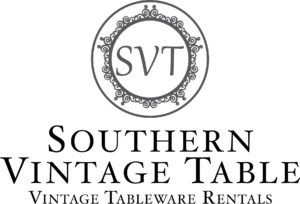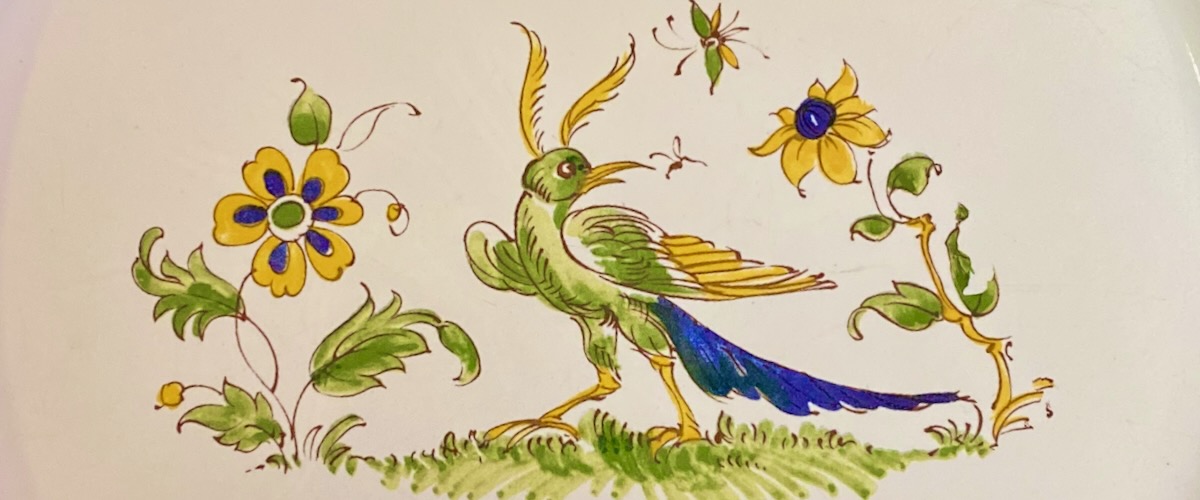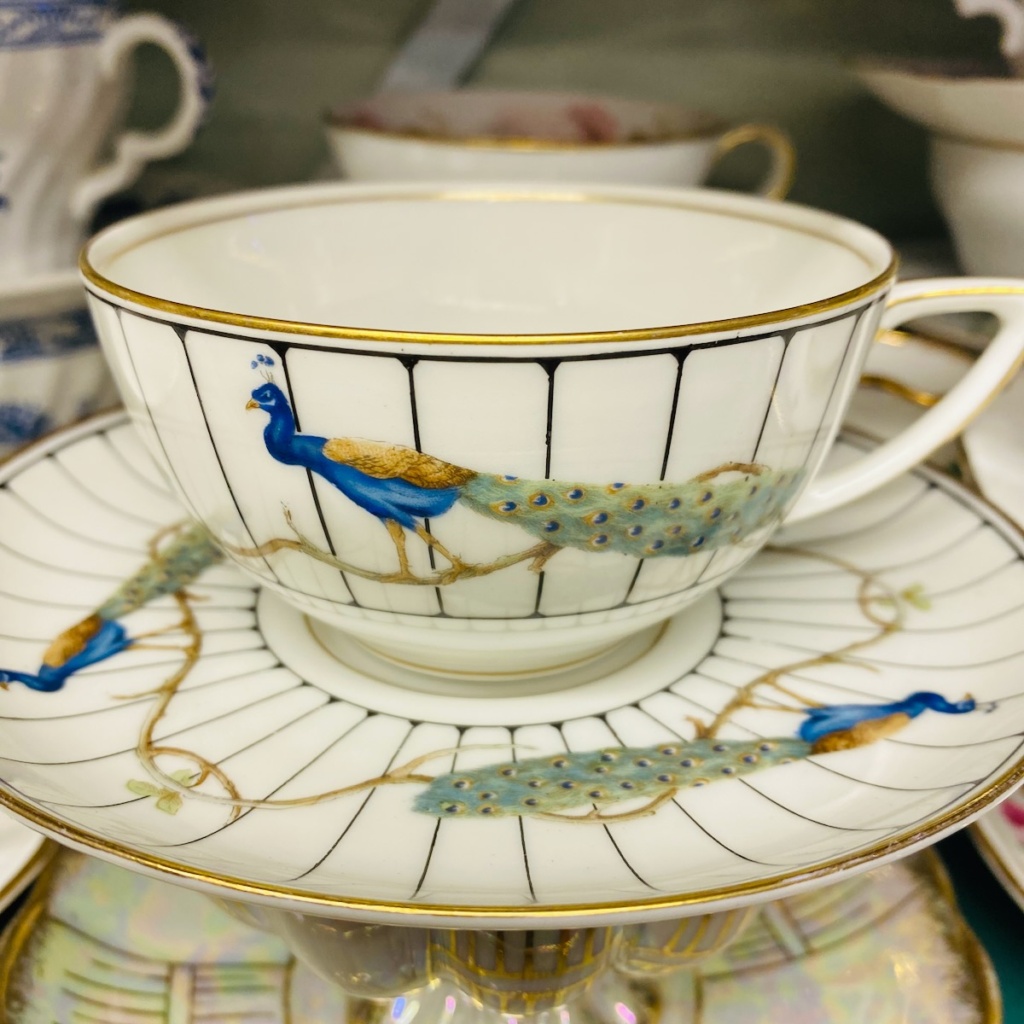
Birds are amazing creatures – they can fly, lay eggs, and have beautiful feathers. The way they strut on their two feet is quite delightful! So, it makes sense they would adorn many vintage china patterns. Today we are sharing some of the ones we have in our collection but there are many, many more.
Our first set is a group paying homage to the pheasant. There are many species of pheasants and most of the males have gorgeous, vibrant feathers. We learned they are also quite delicious.
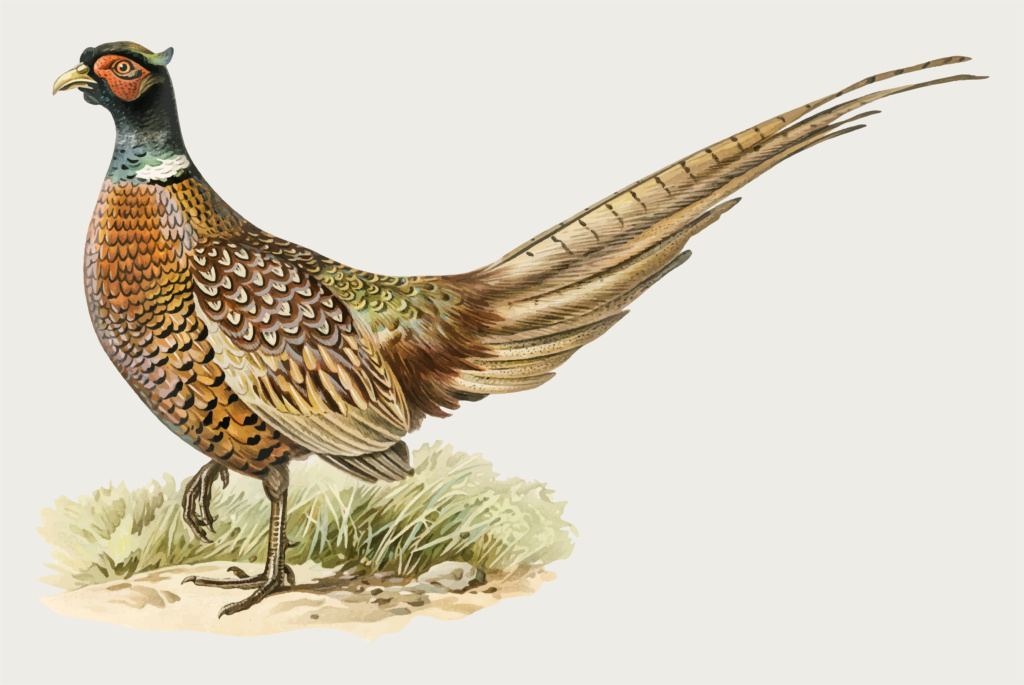
These three vintage patterns are known as Asiatic Pheasants. This popular pattern was created in England during the mid 1800s and has been copied by many different pottery companies.

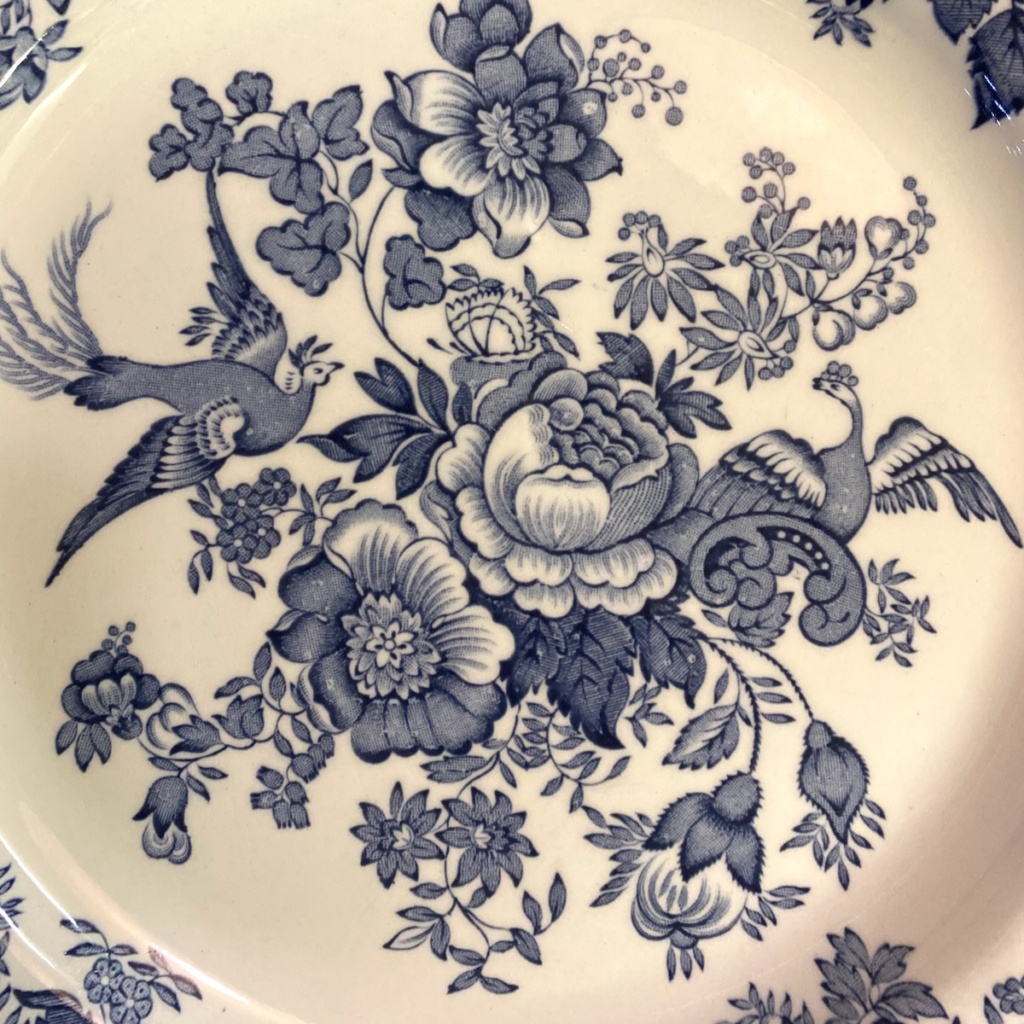
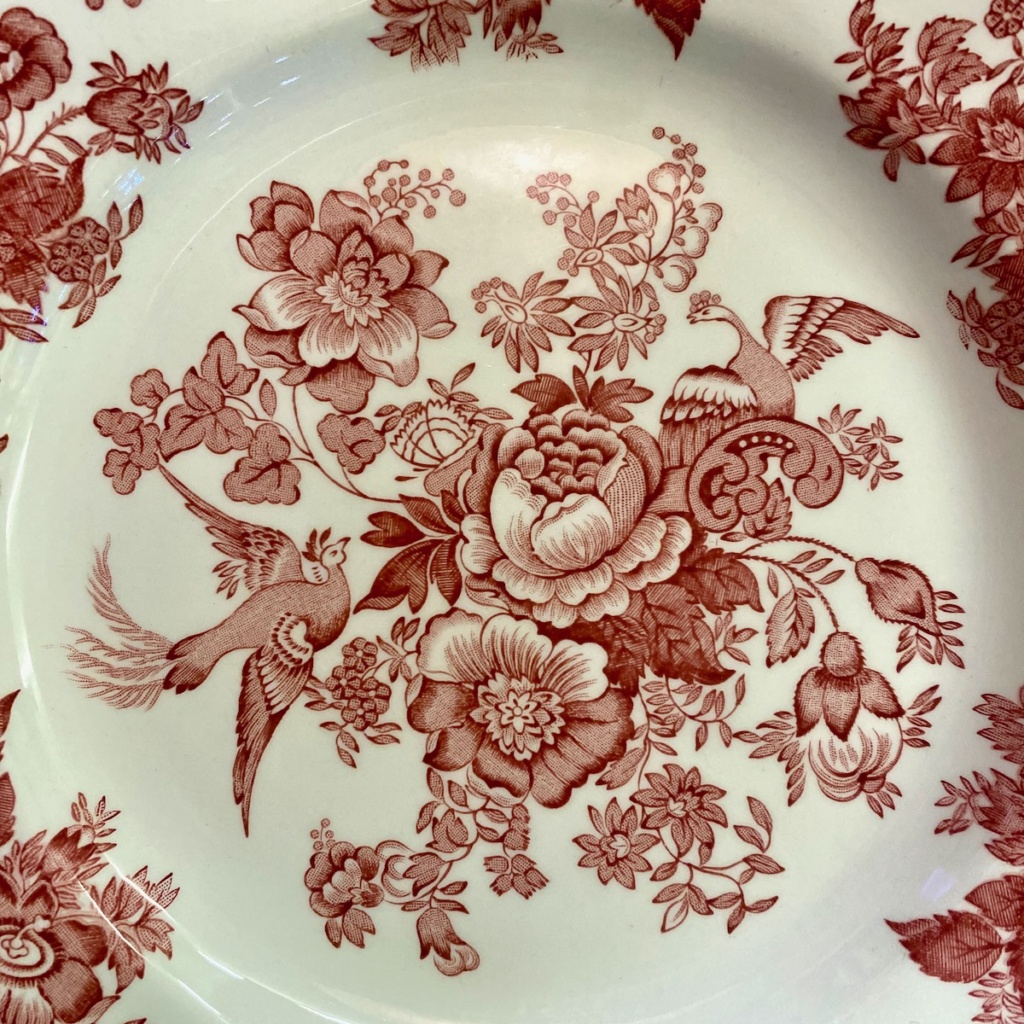
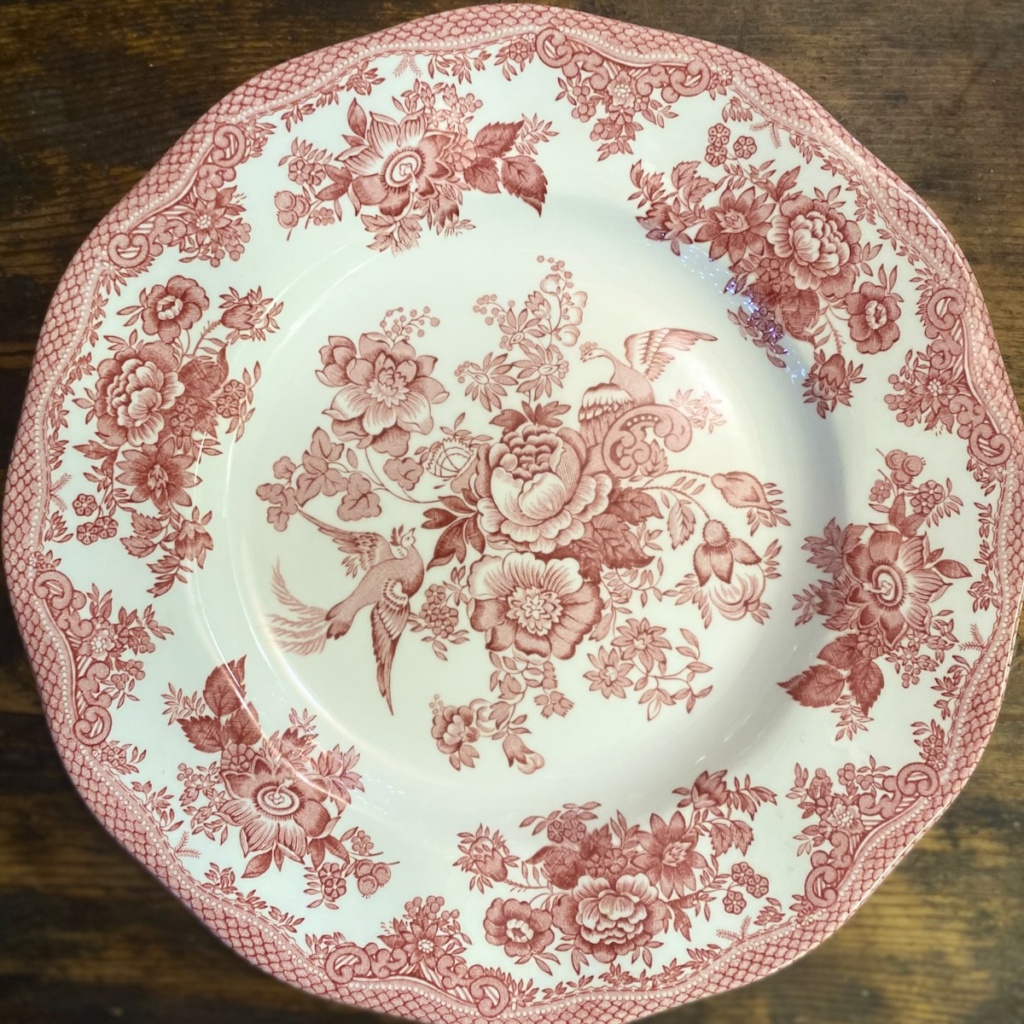
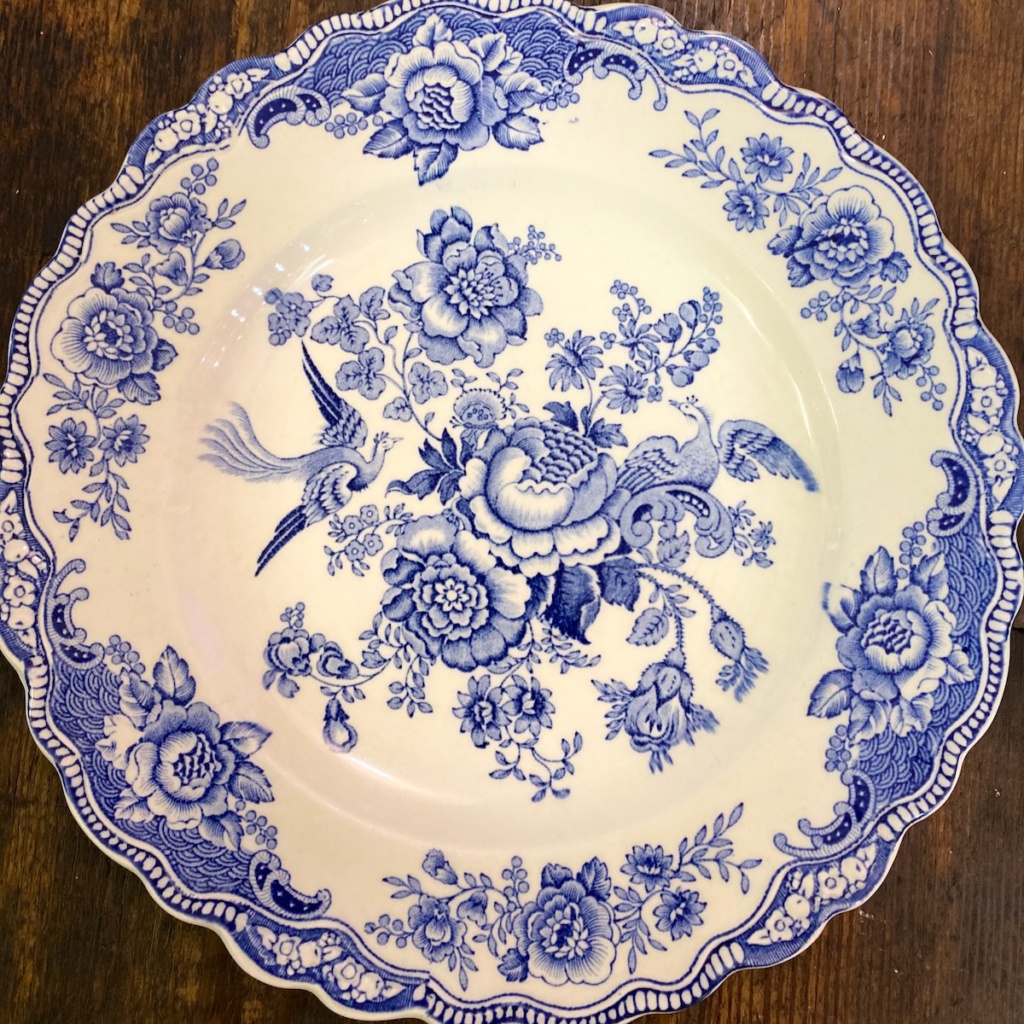
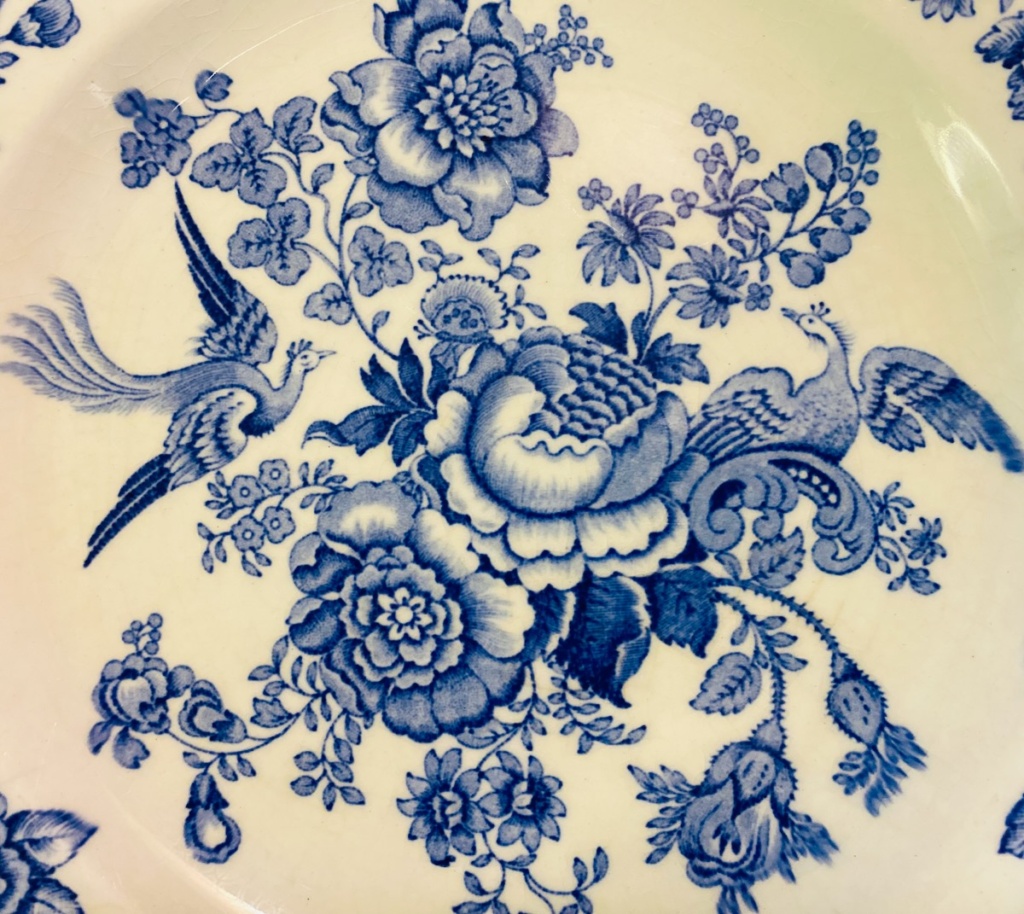
Pheasants are also on these next patterns. Their bright feathers are prominently featured. The first is a vintage design by Johnson Brothers, the second is Chelsea Bird by Myott, the third is Spring Garden by Royal Gallery, and the last pattern is from France, called Vieux Provence by Varagas.
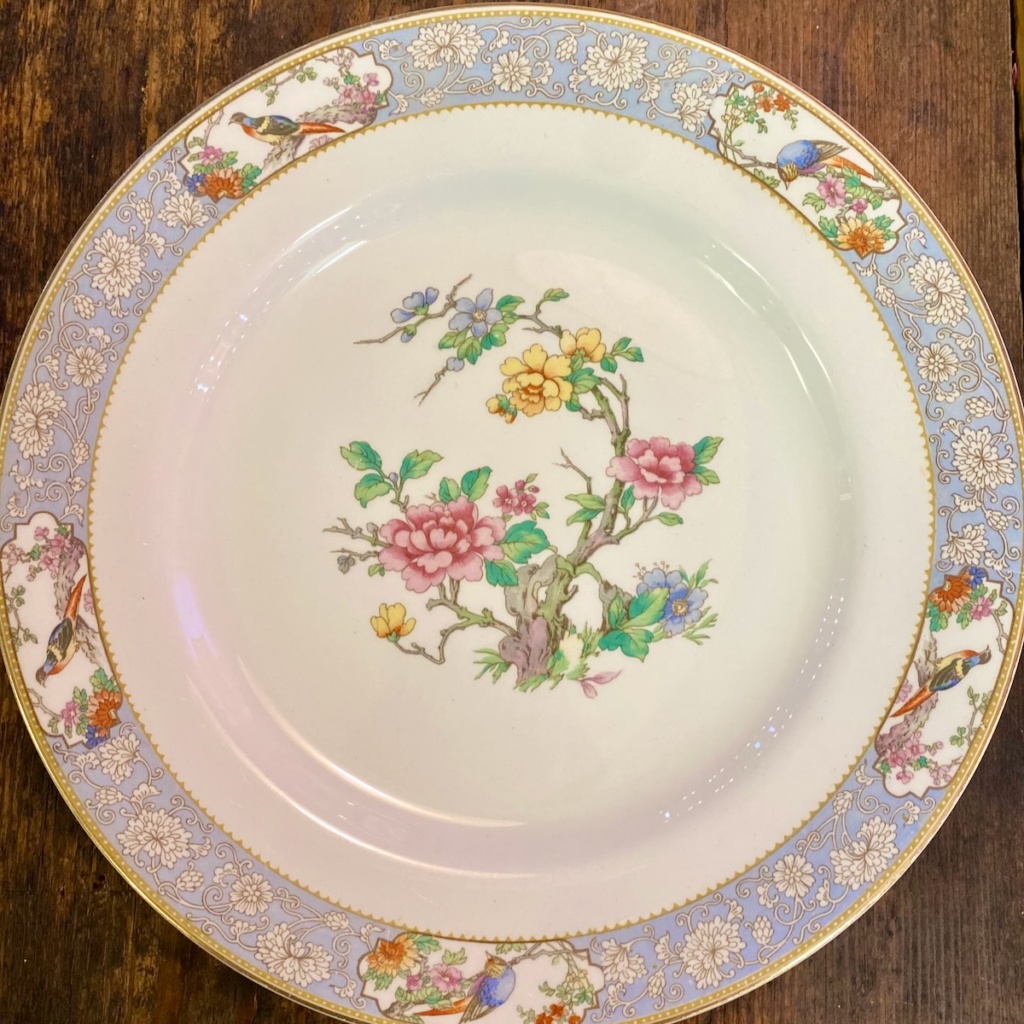
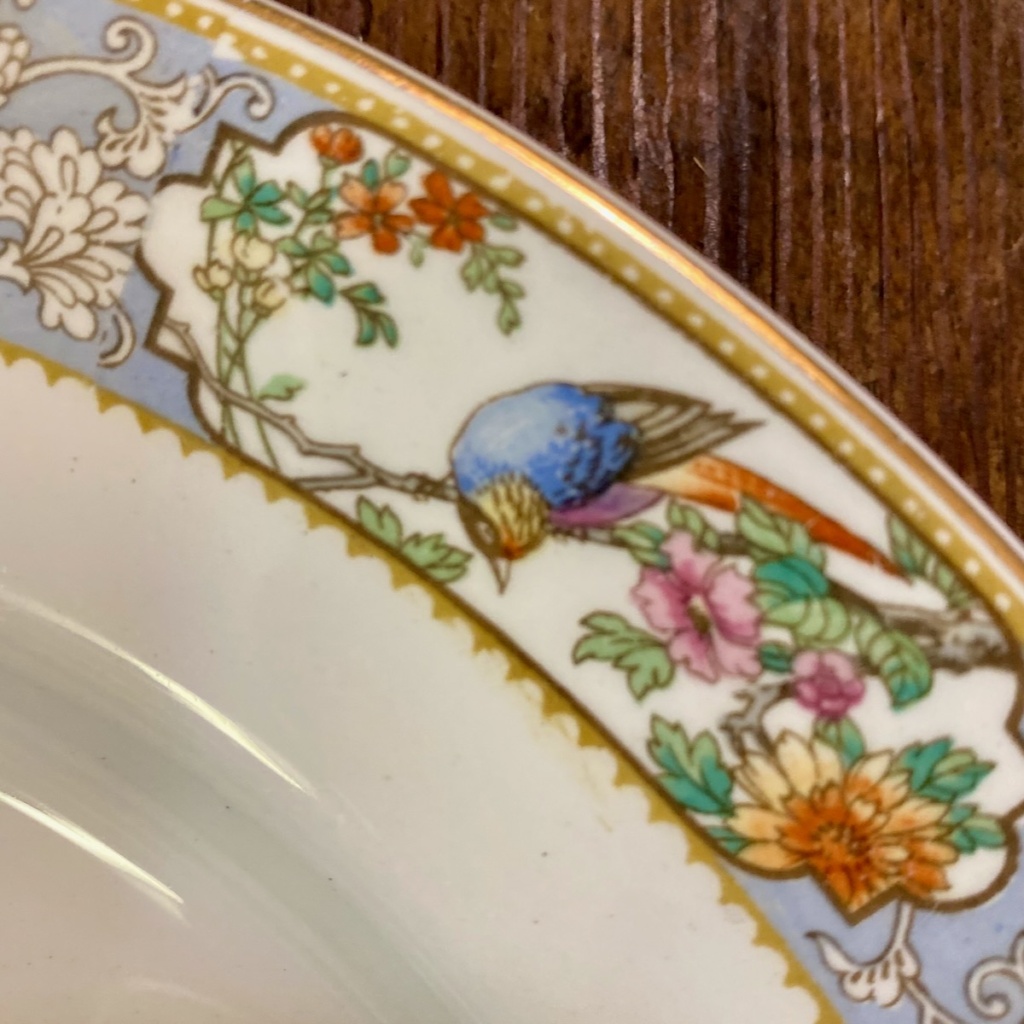
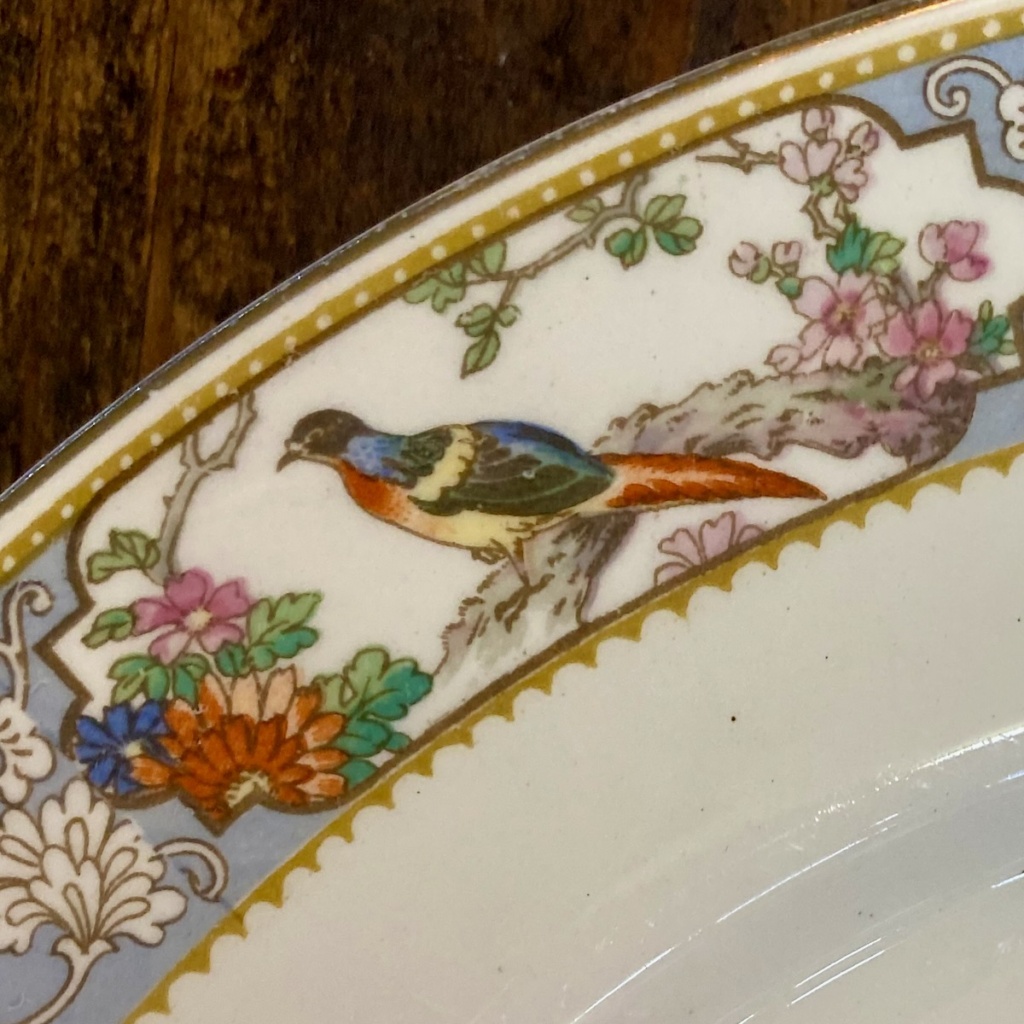
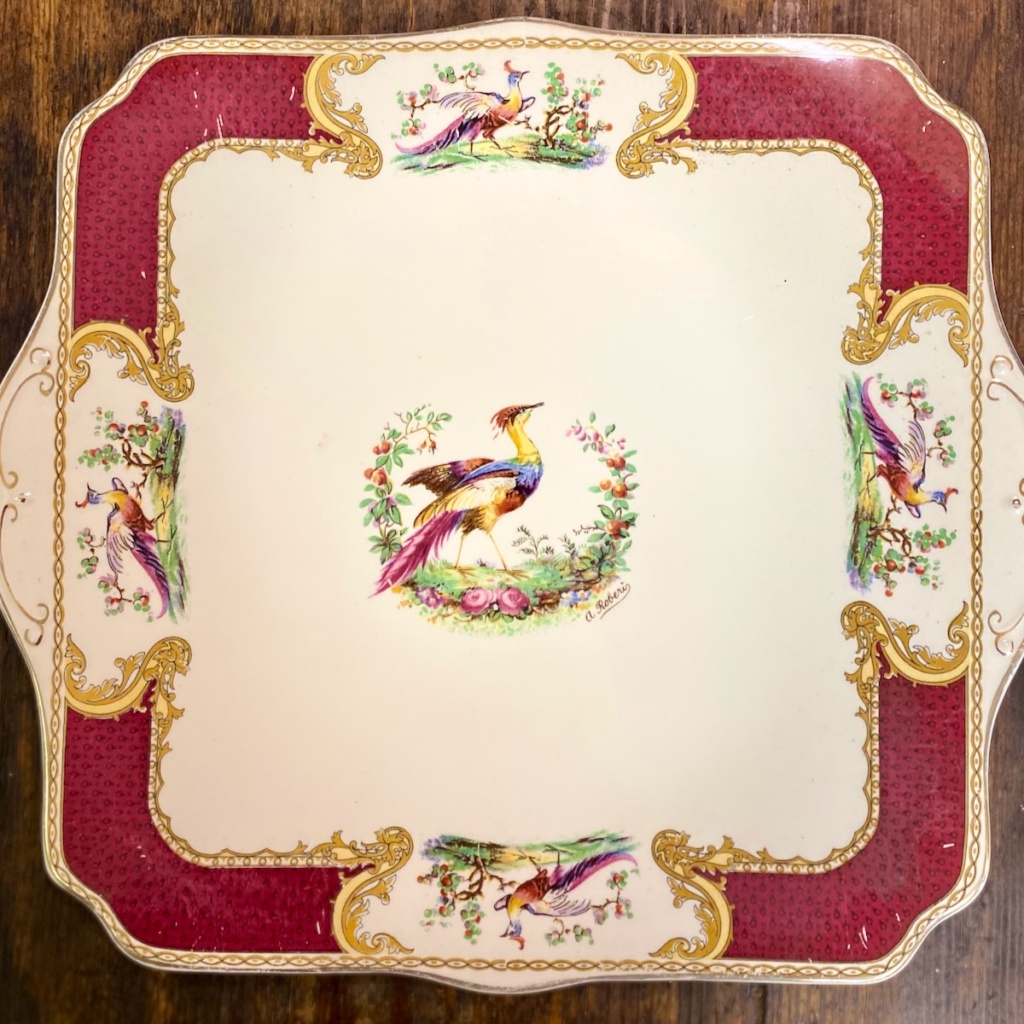
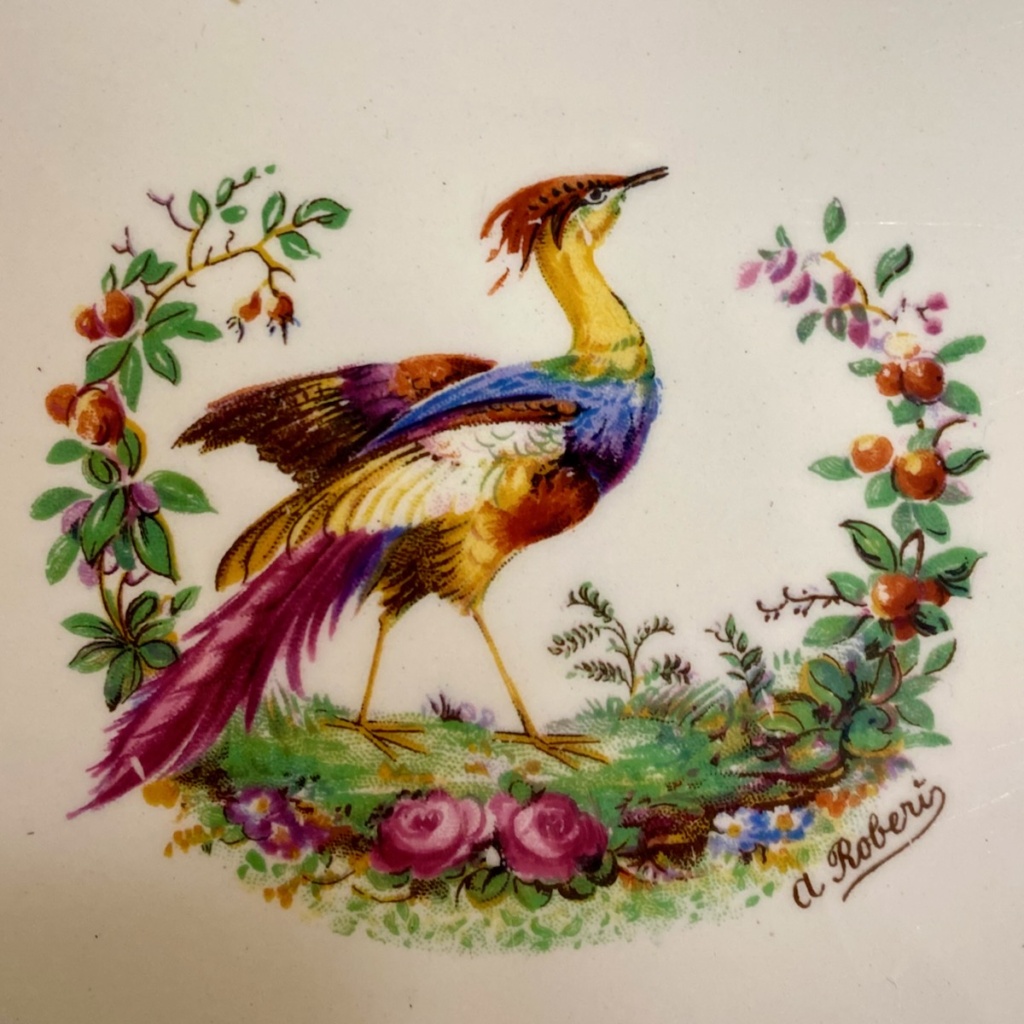
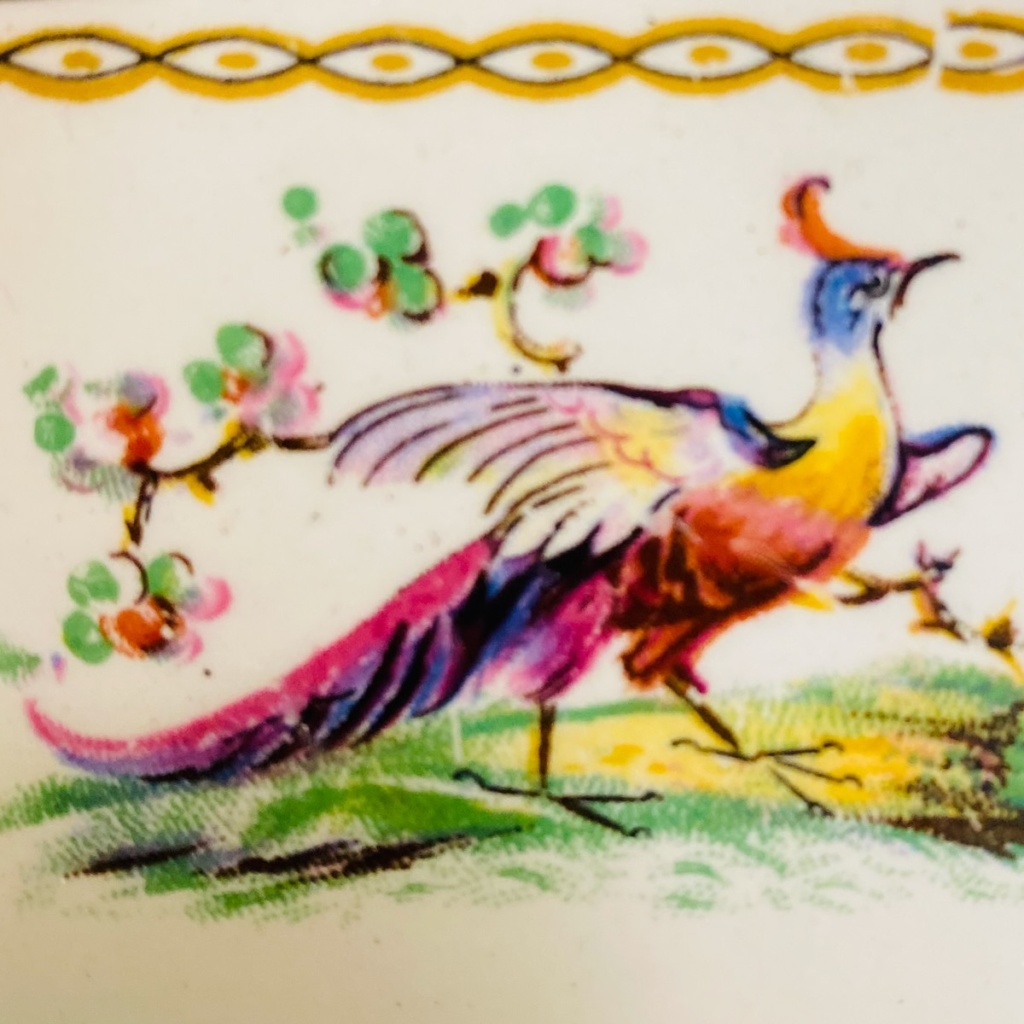
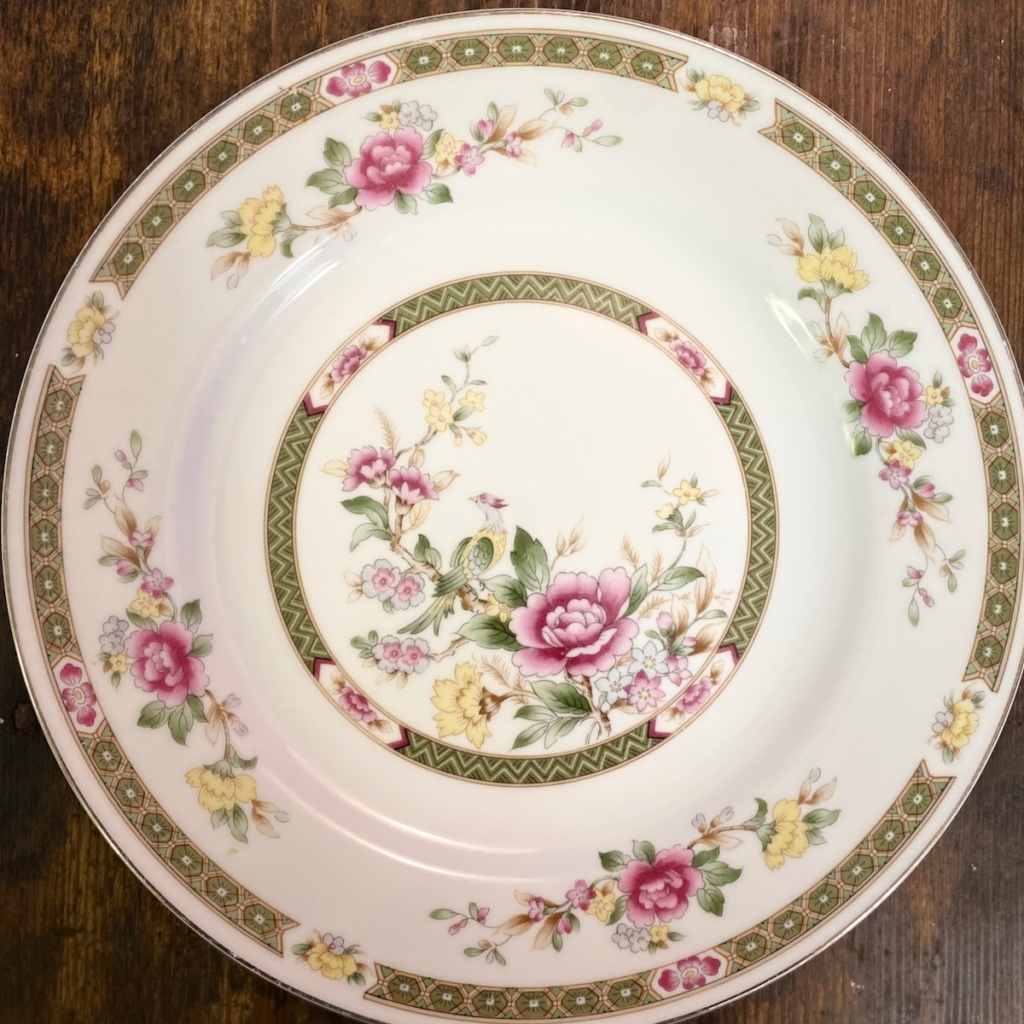
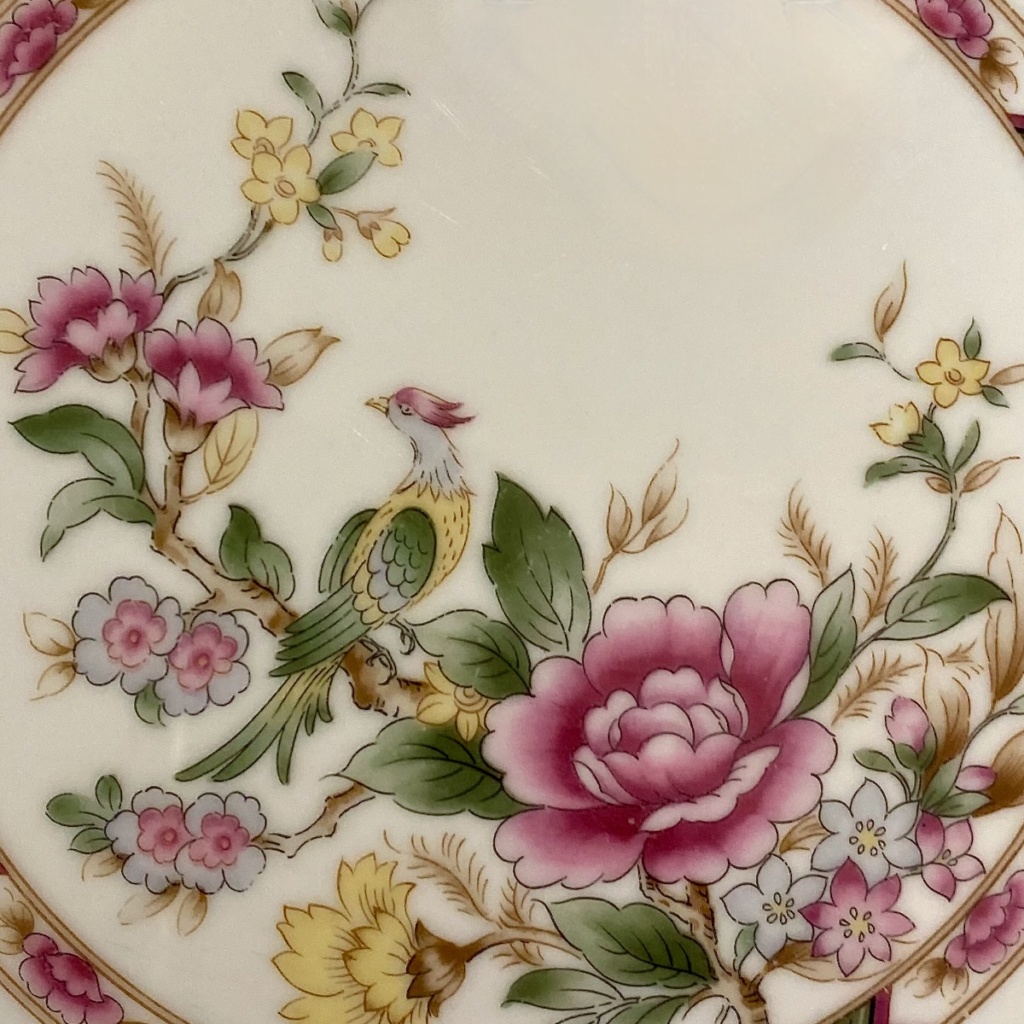
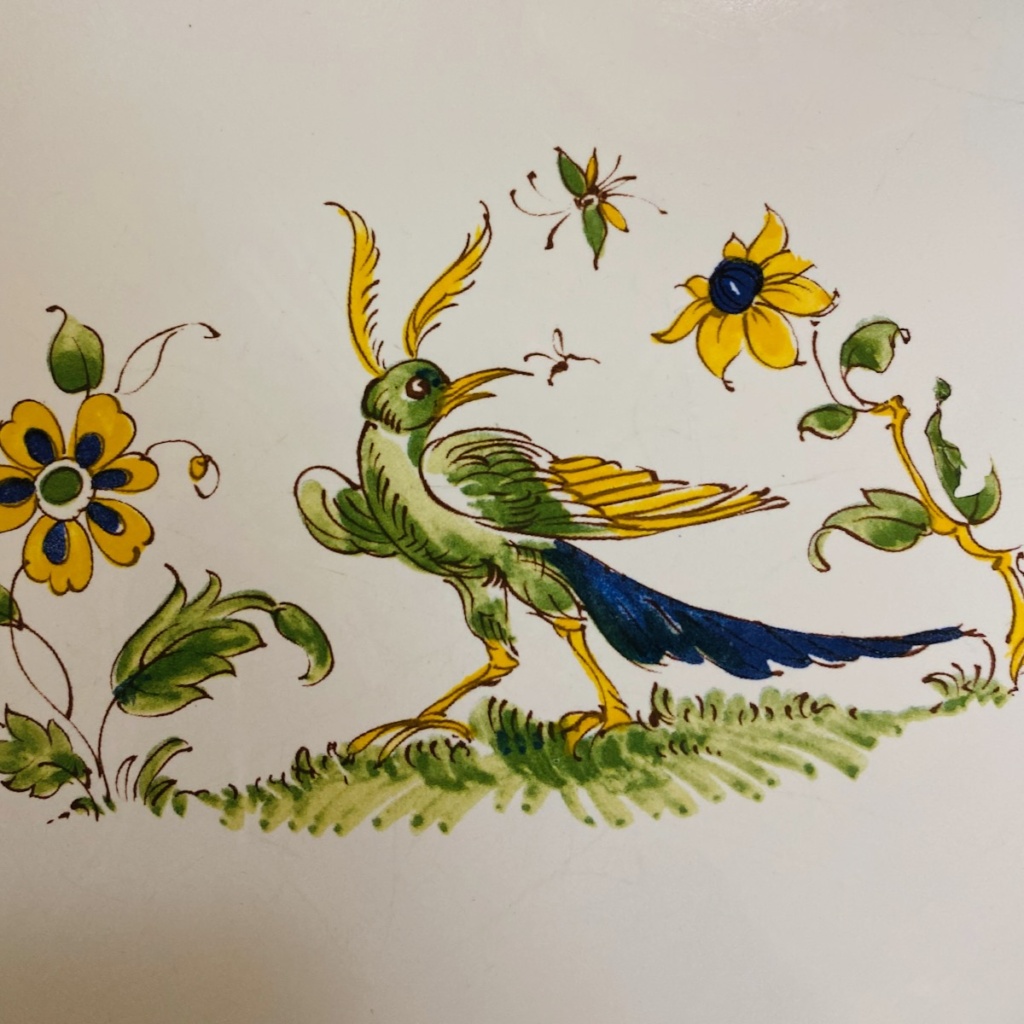
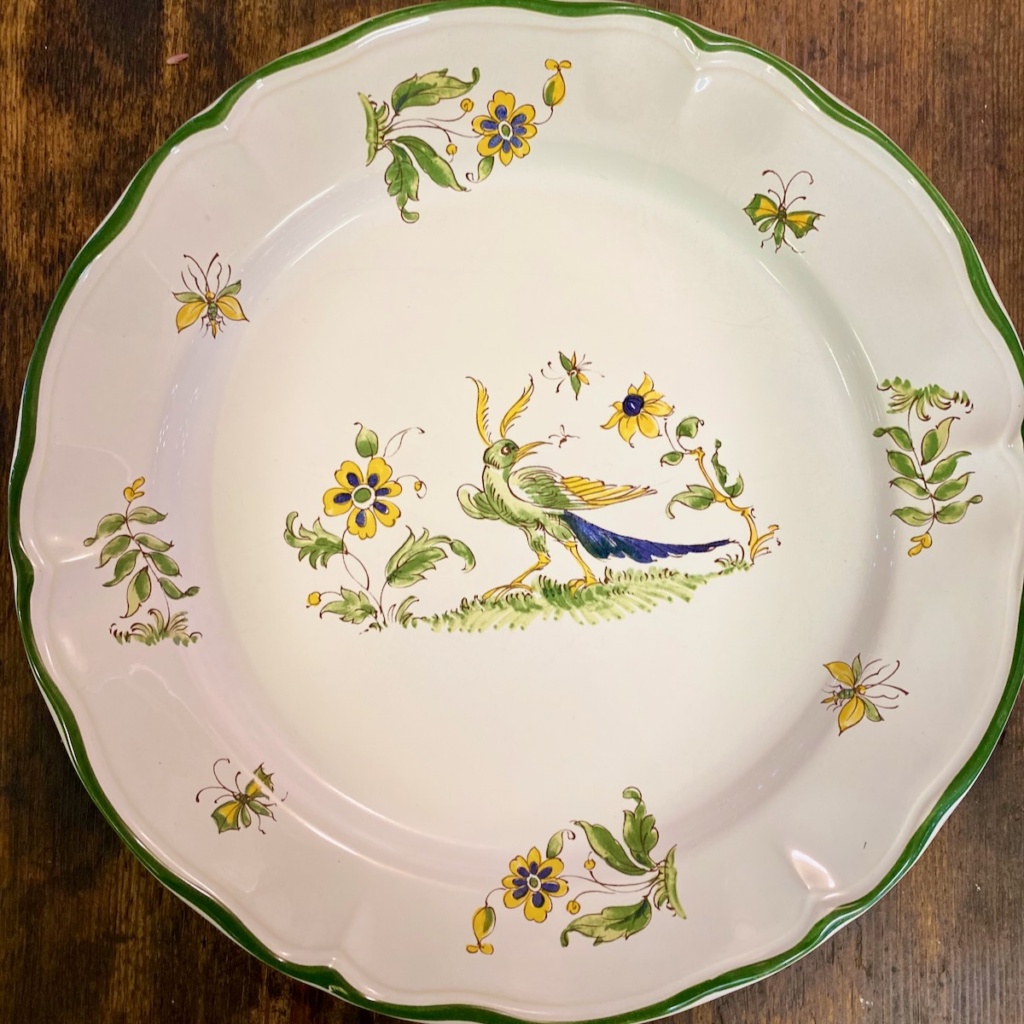
It appears that birds that are delicious to eat appear more often on plate patterns! Quail by Furnival comes in a variety of two tones – we have blue small plates and brown dinner plates in our collection.
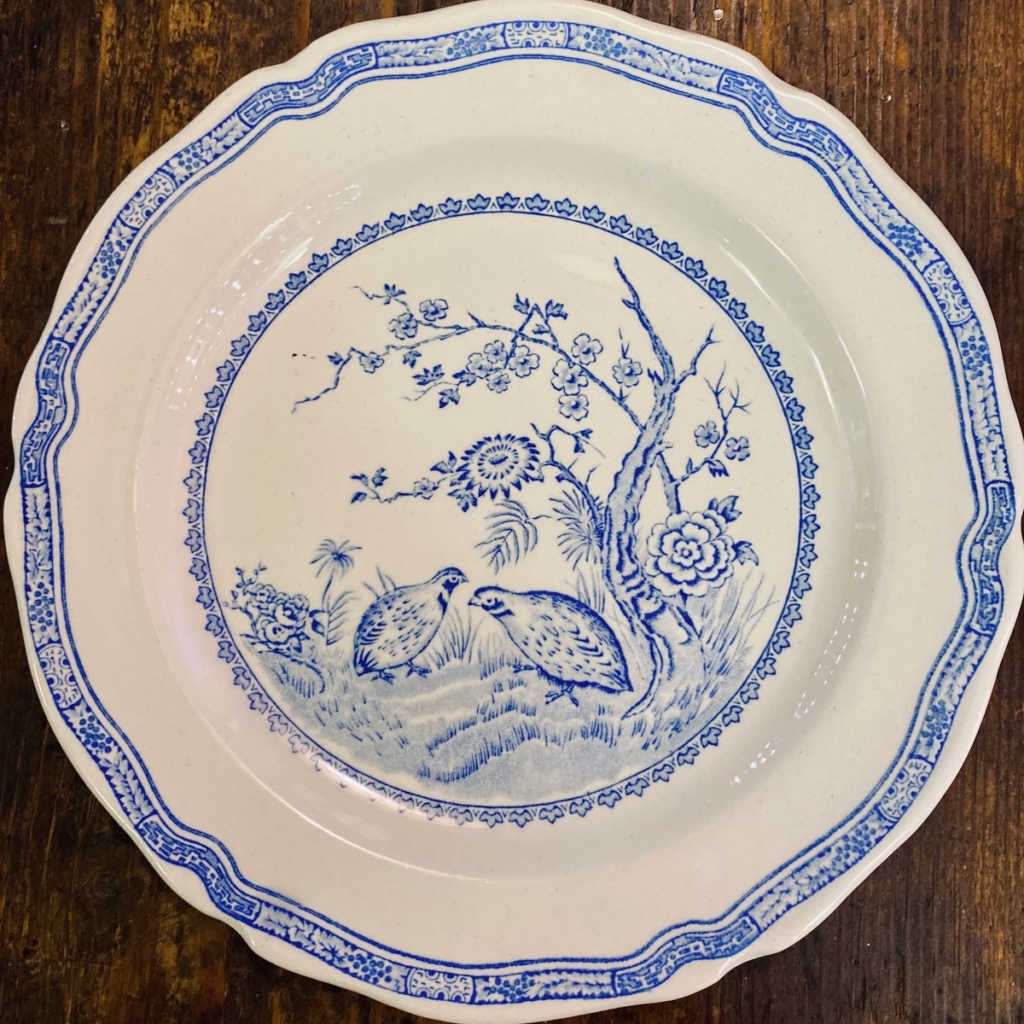
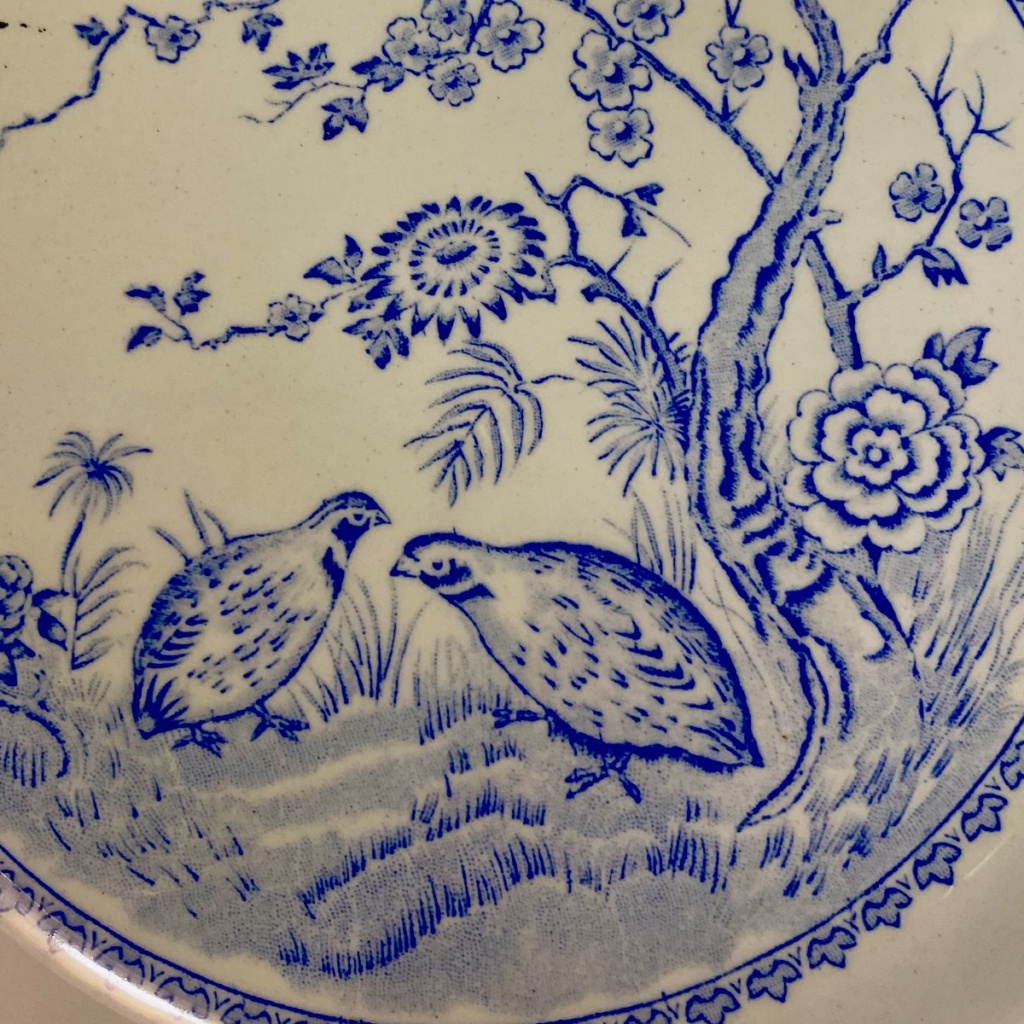
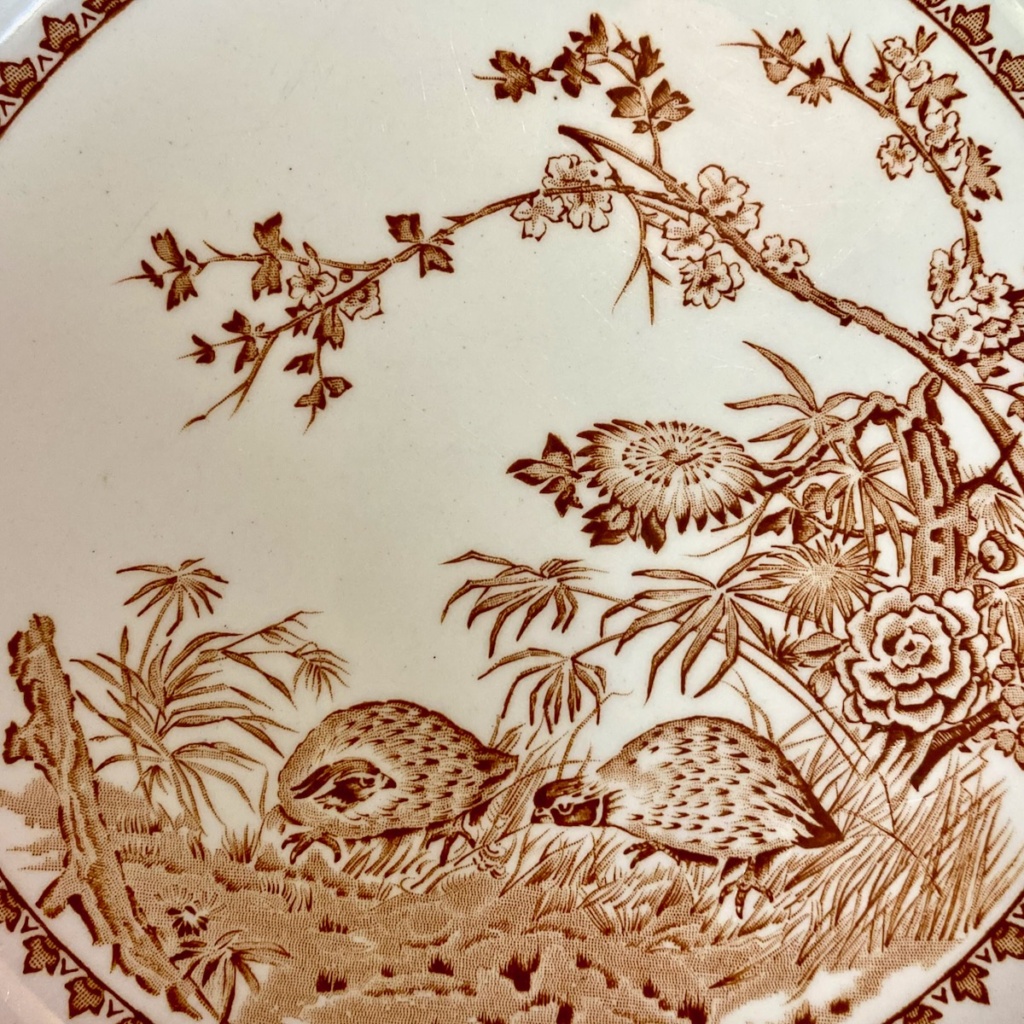
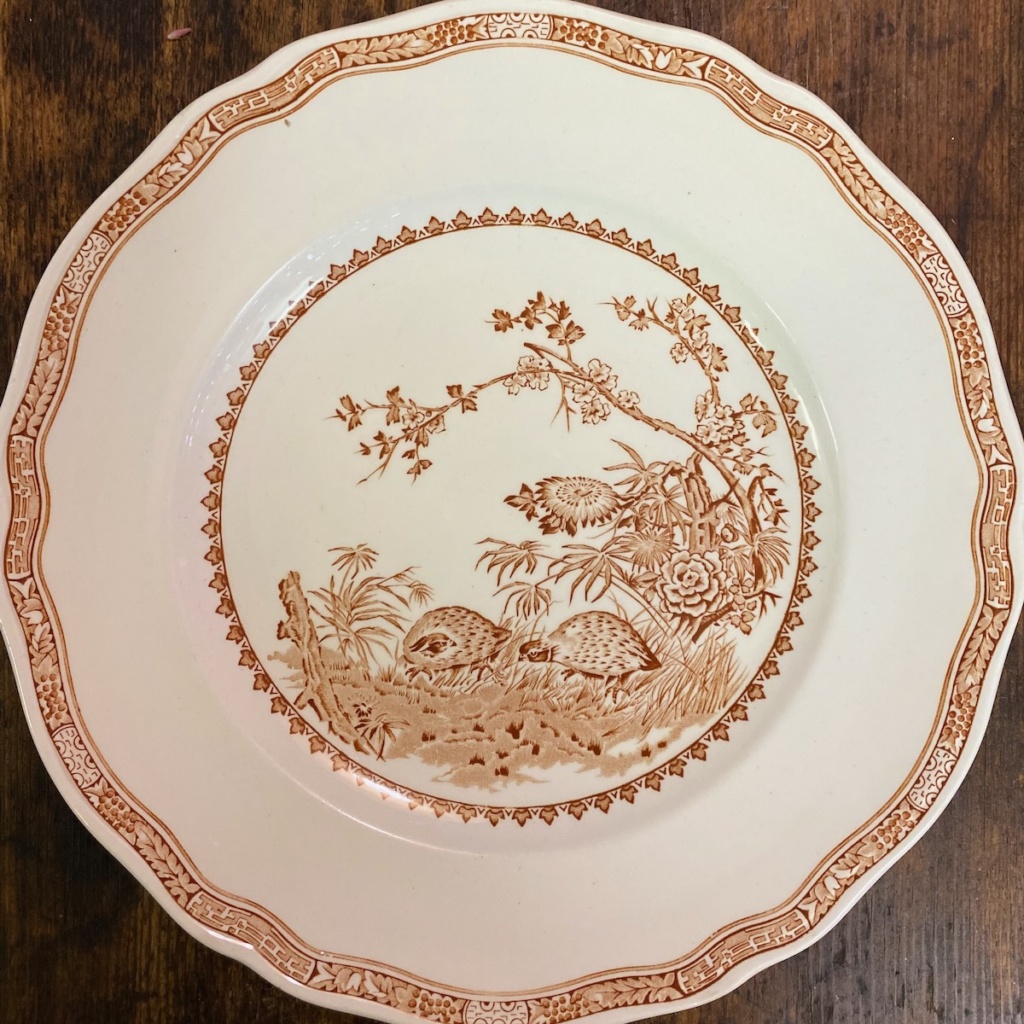
And, of course, we see lots of roosters and chickens on dinner plates. These whimsical patterns are mid century, with the first and last are Taylor Smith & Taylor and the middle one is Scio.
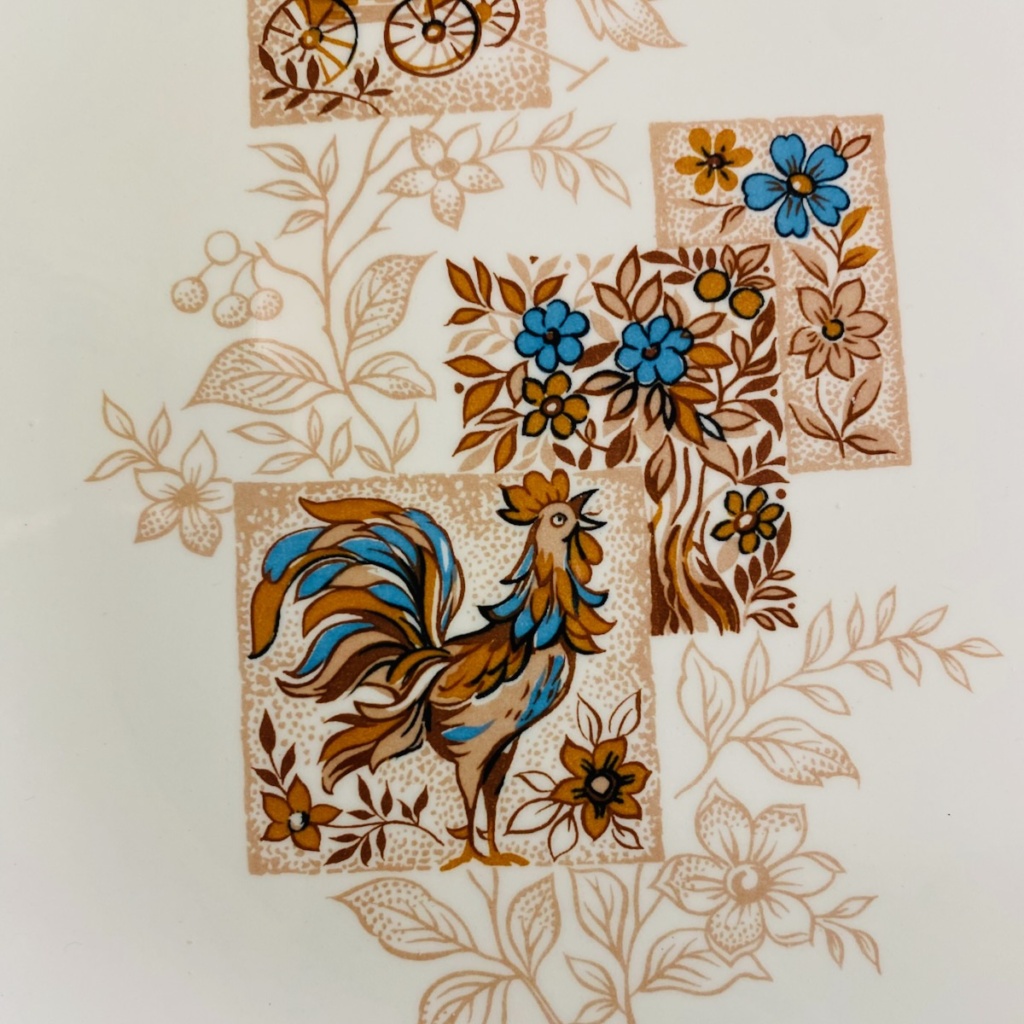
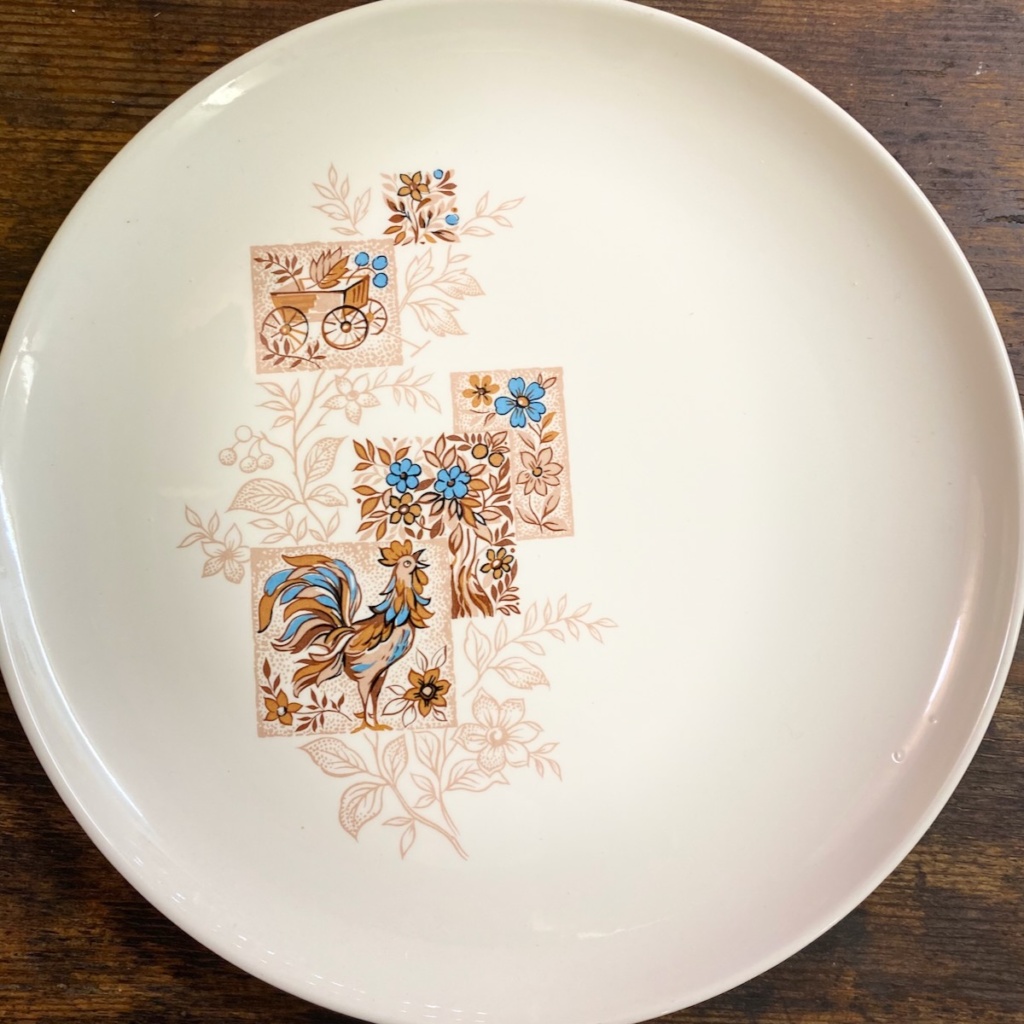
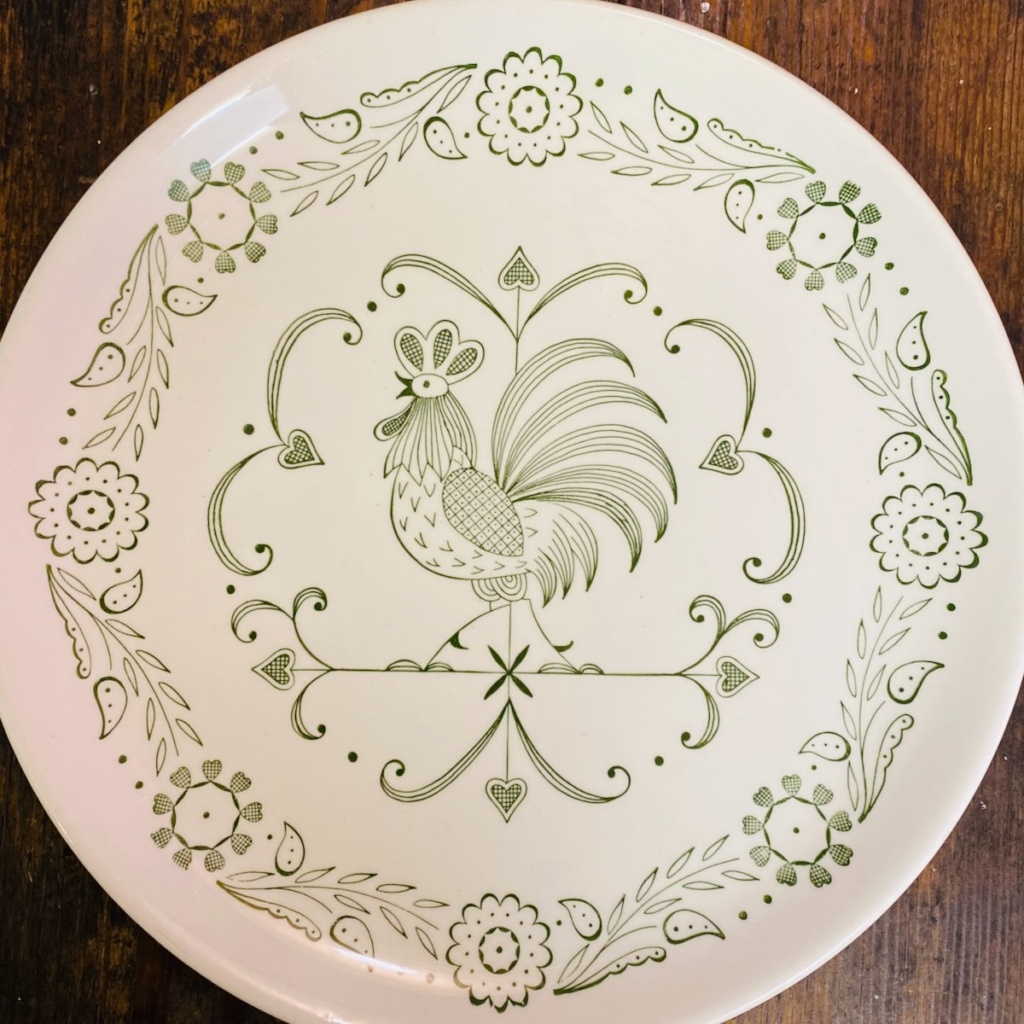
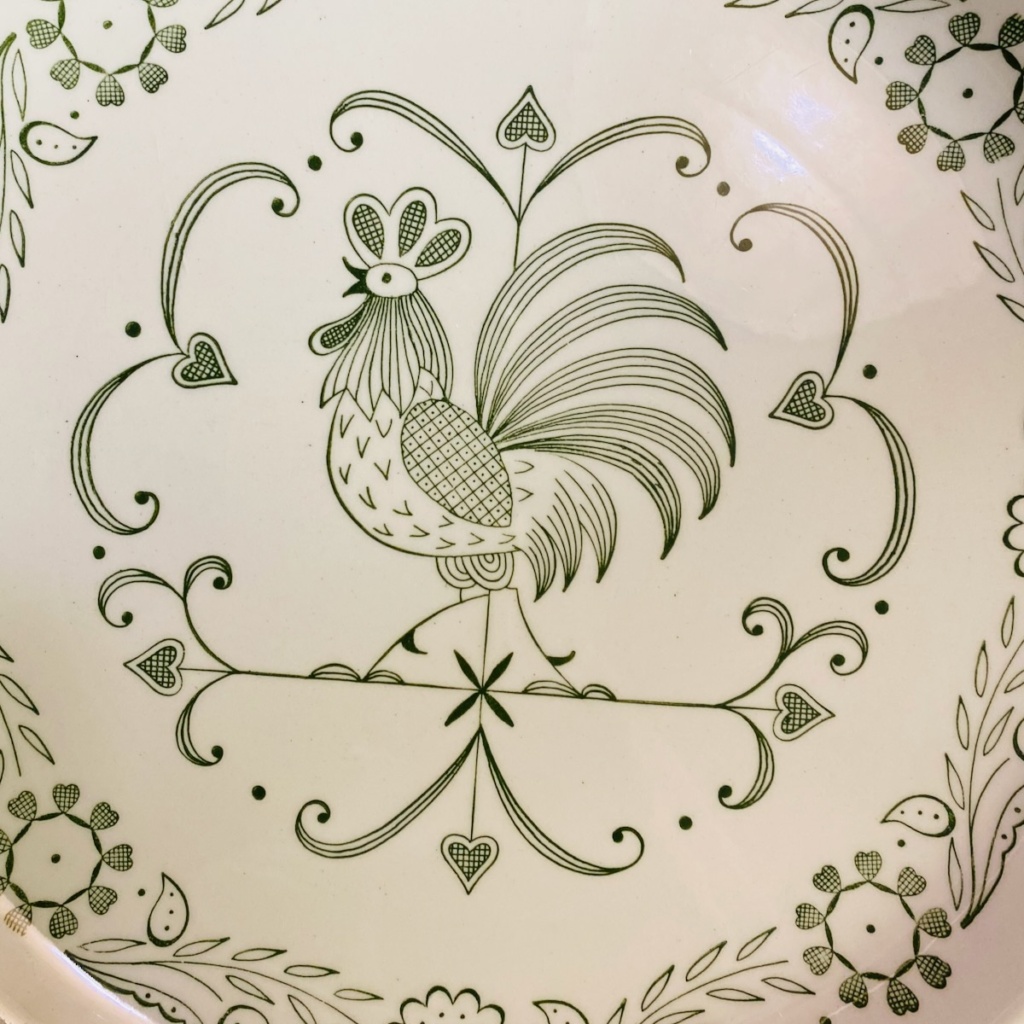
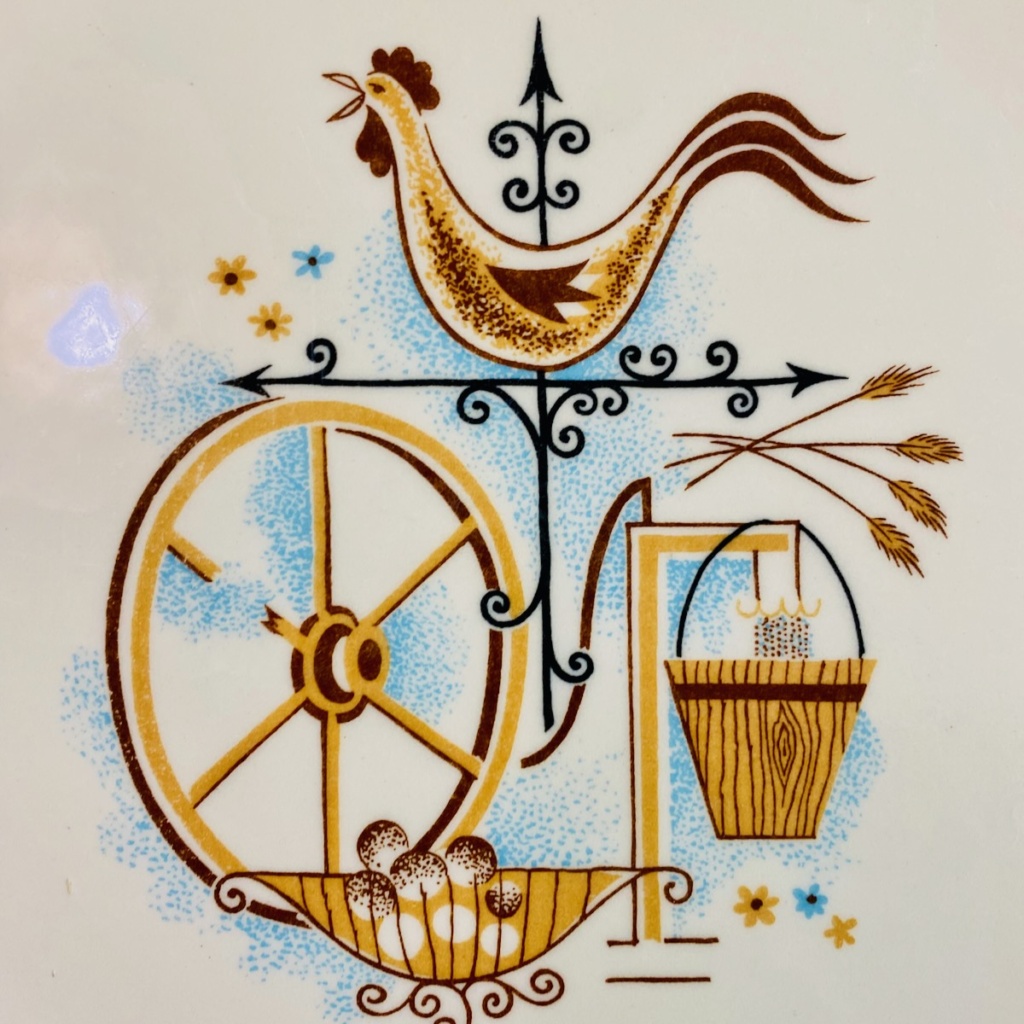
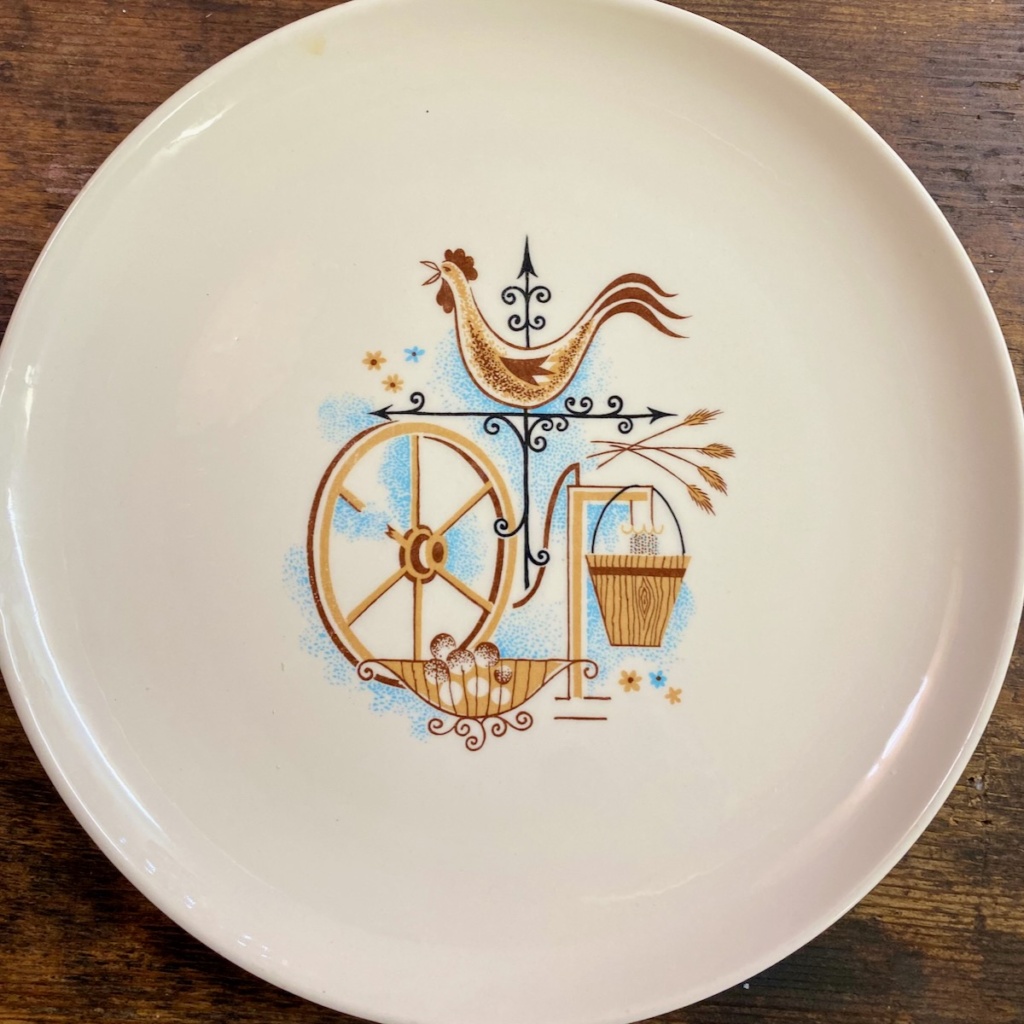
These next patterns have birds that we cannot identify, but they do add beauty and detail to each pattern. They are Devonshire by Johnson, Willliamsburg Potpourri by Wedgwood, Vintage Woodsong by Fine China, and Spodes Tower by Spodes.
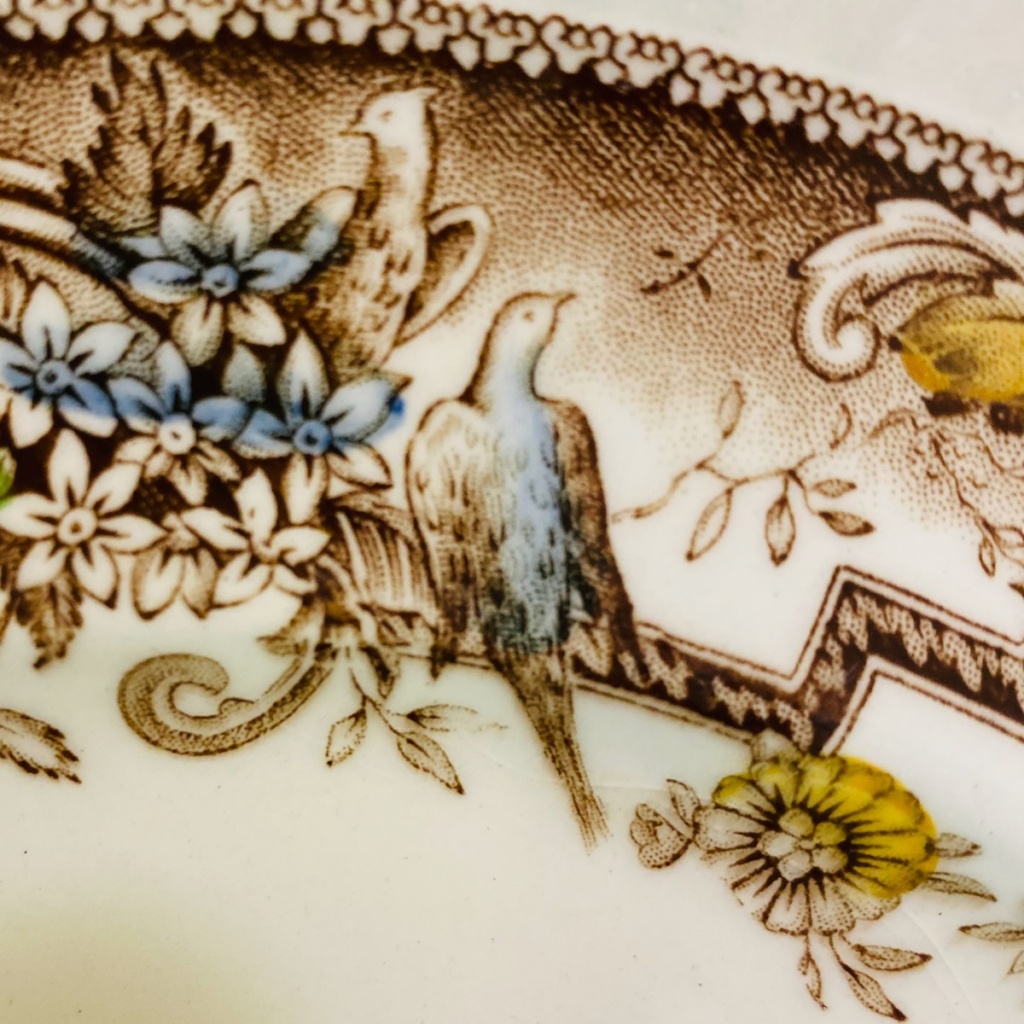

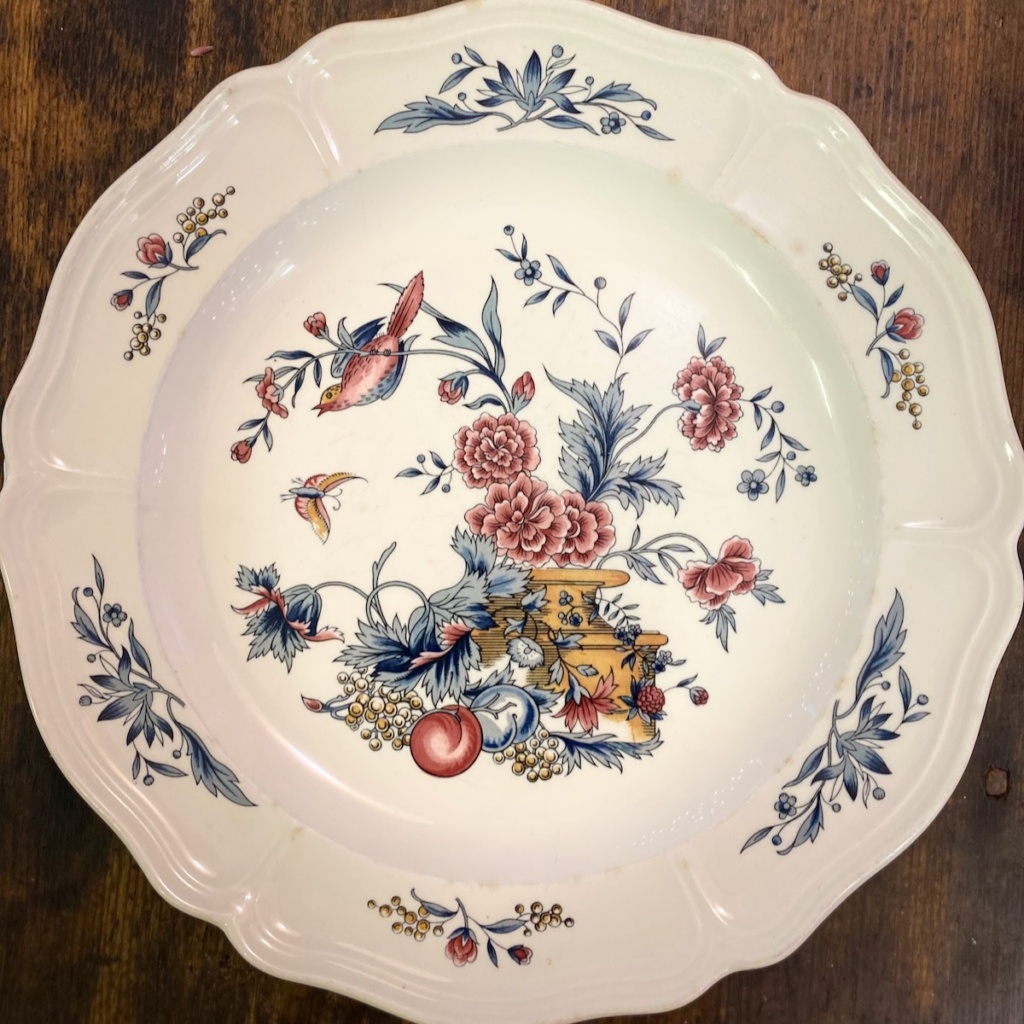
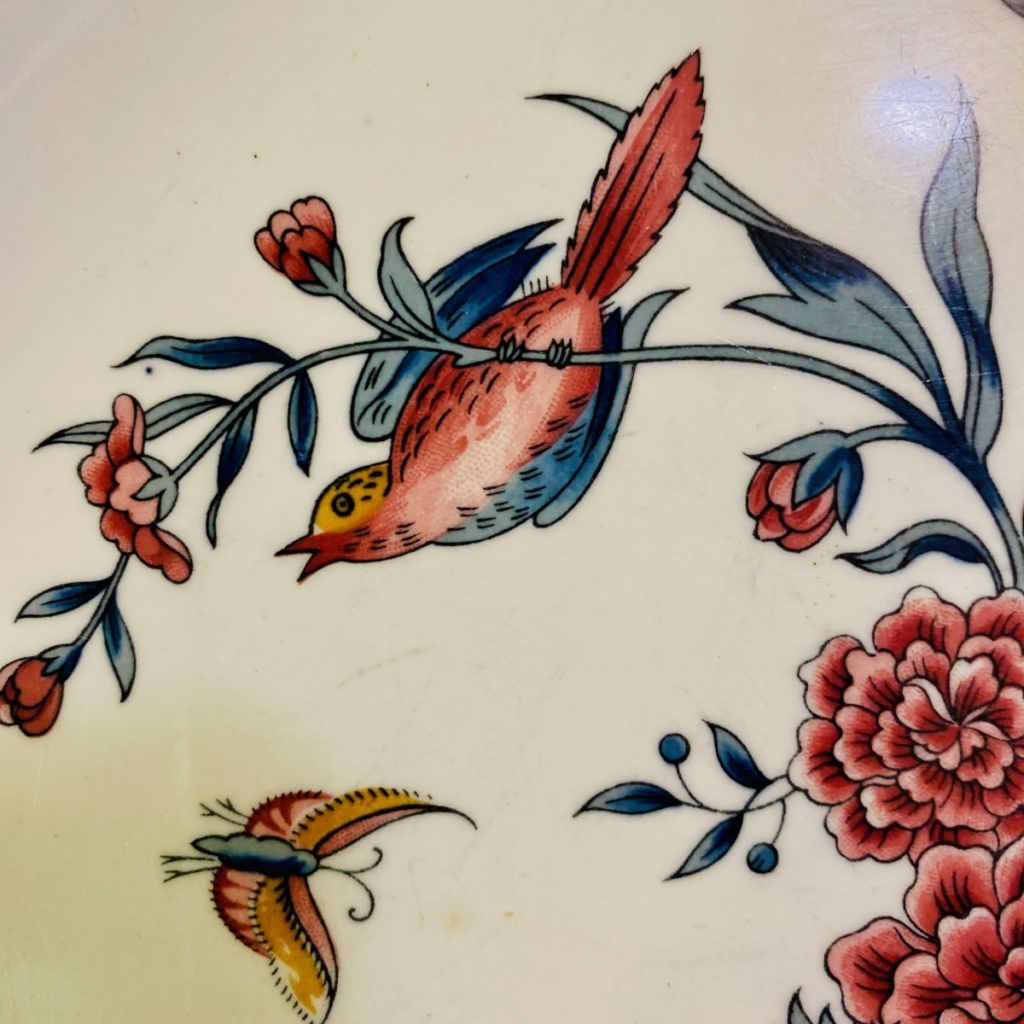
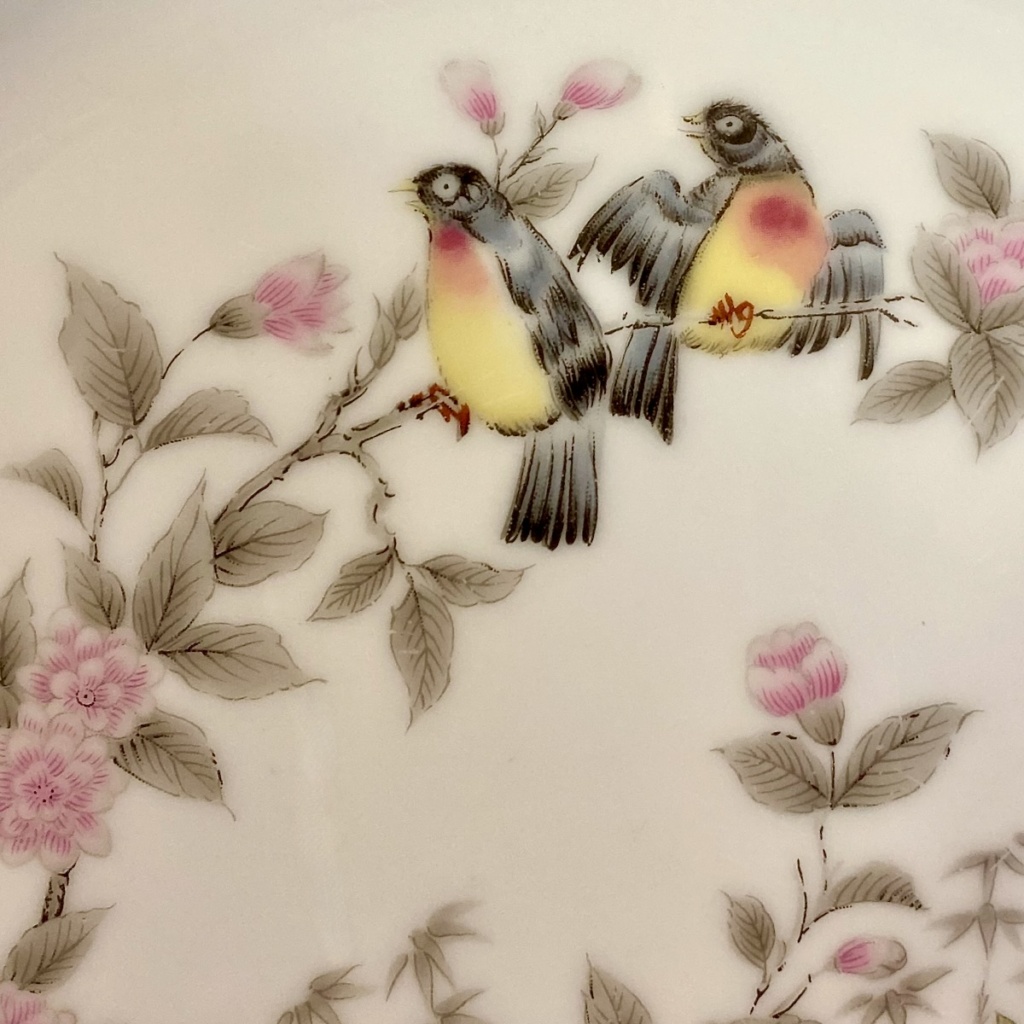
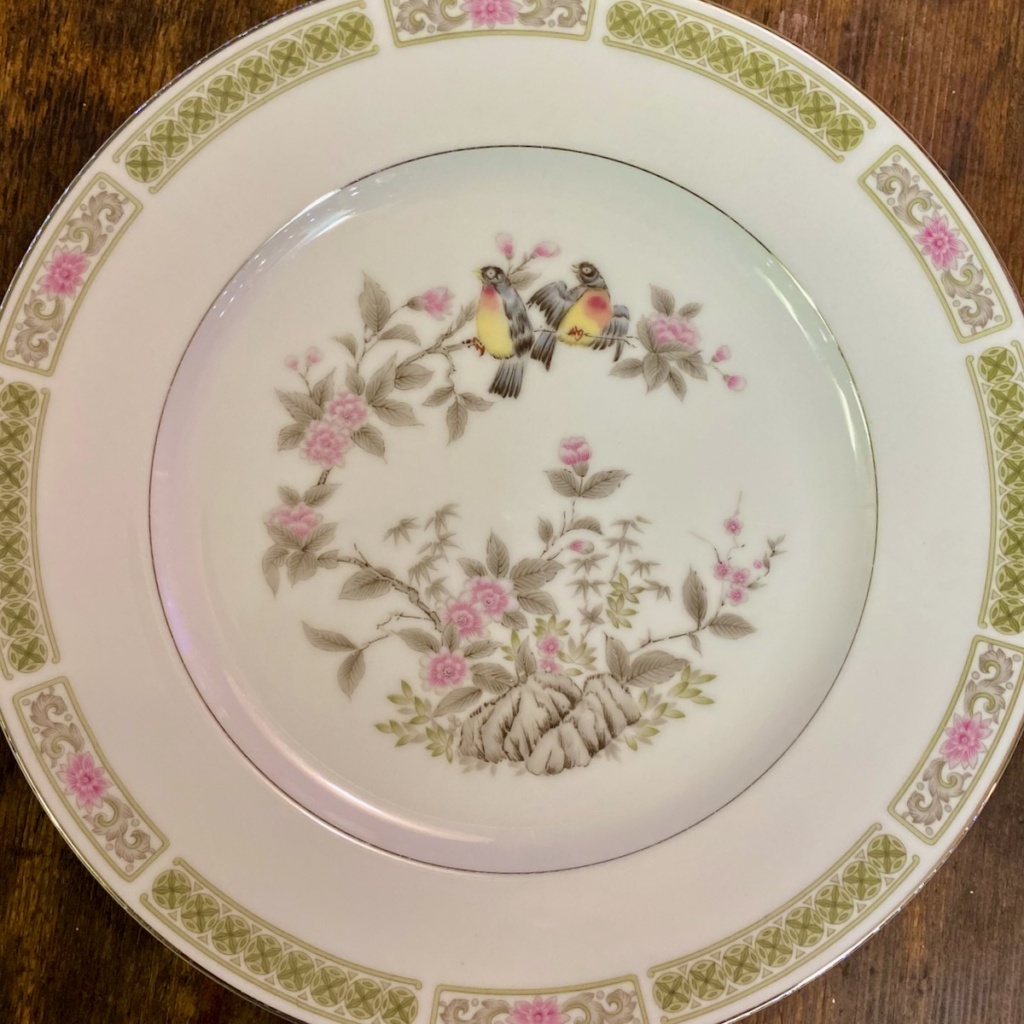
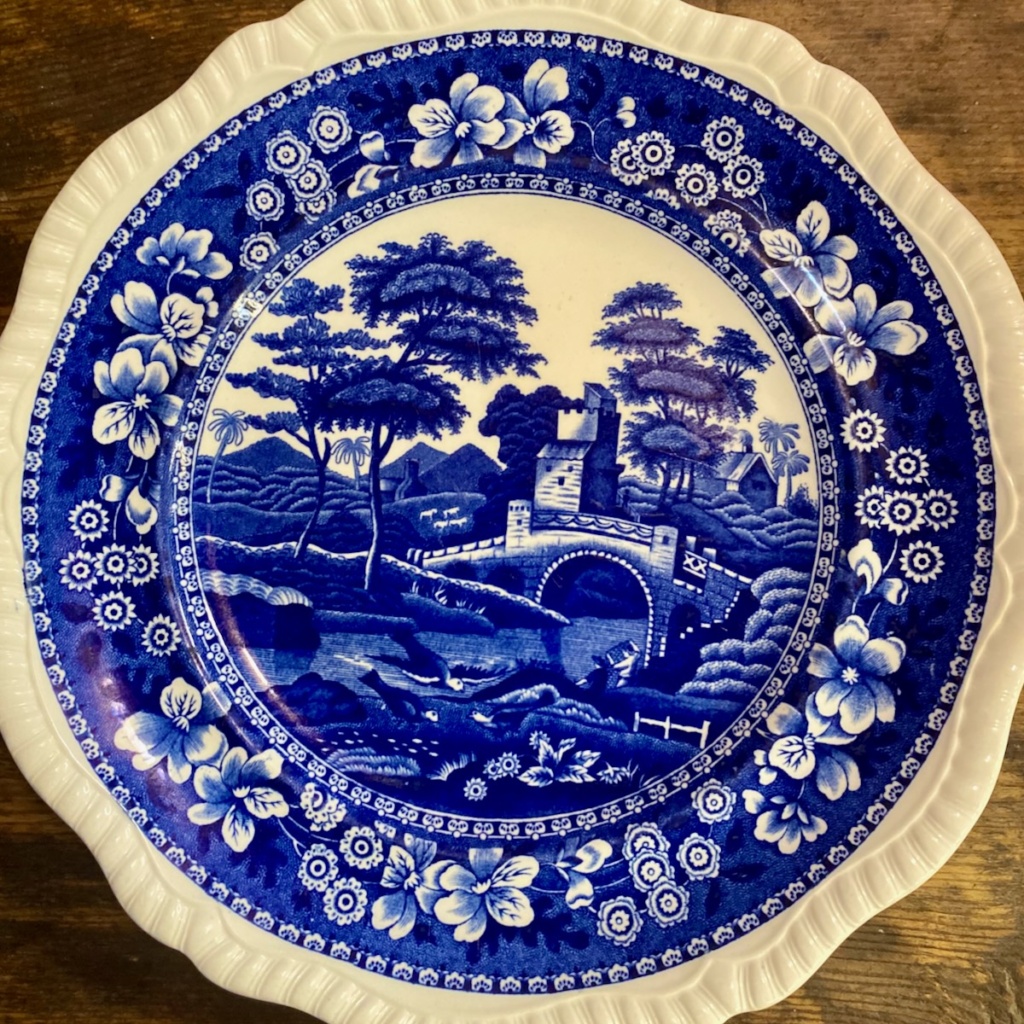
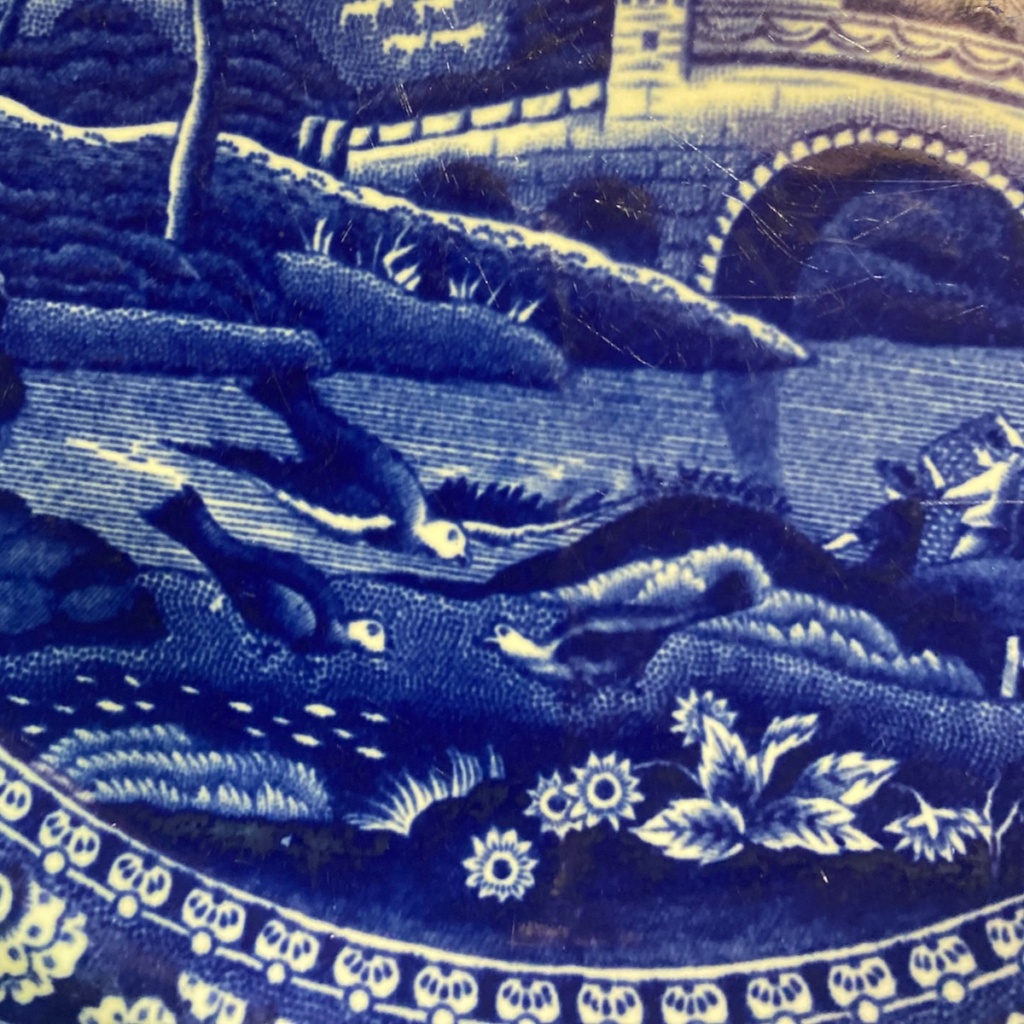
Lastly, the most recognized pattern, Blue Willow, has the famous pair of turtle doves. The story goes that two forbidden lovers were saved by the gods and turned into these loving doves. Did you know that there’s a Pink Willow and a multitude of versions of this original pattern, designed by Thomas Turner in the late 1700s?
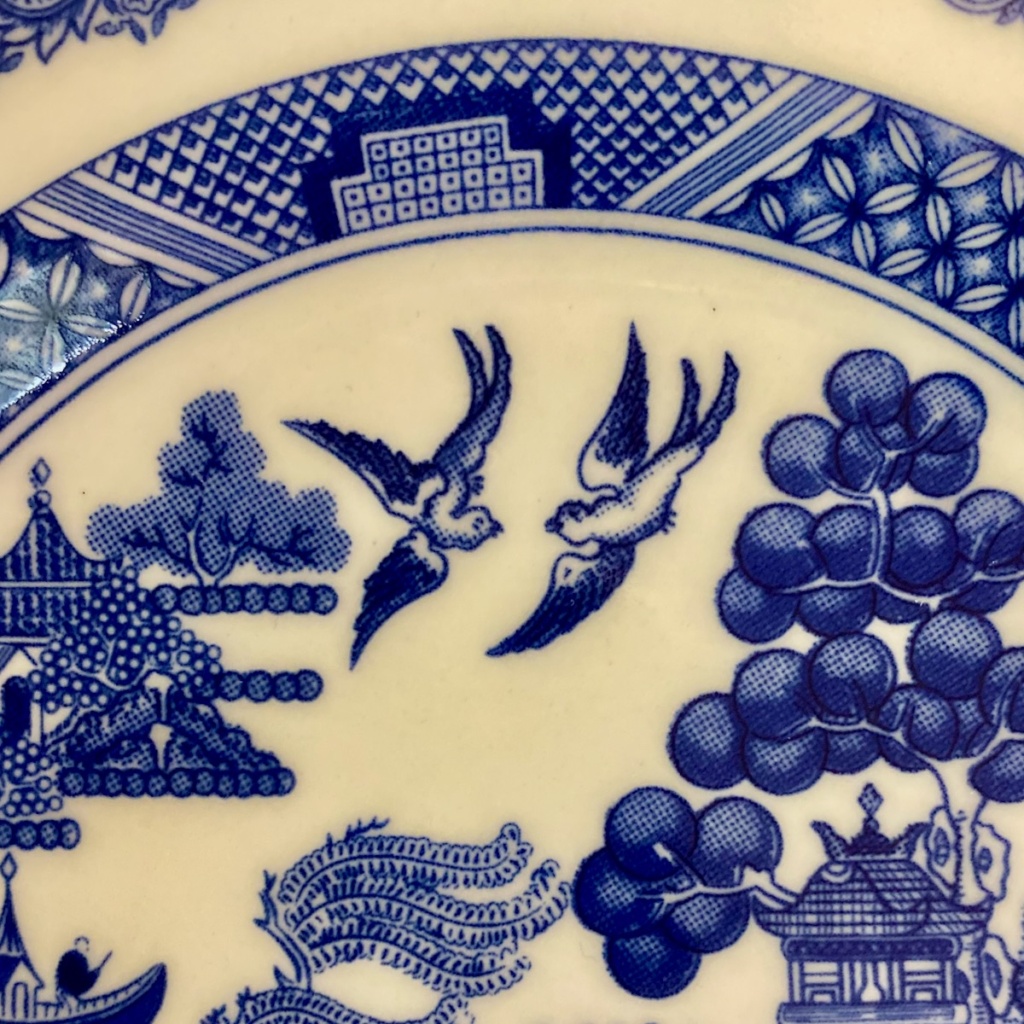
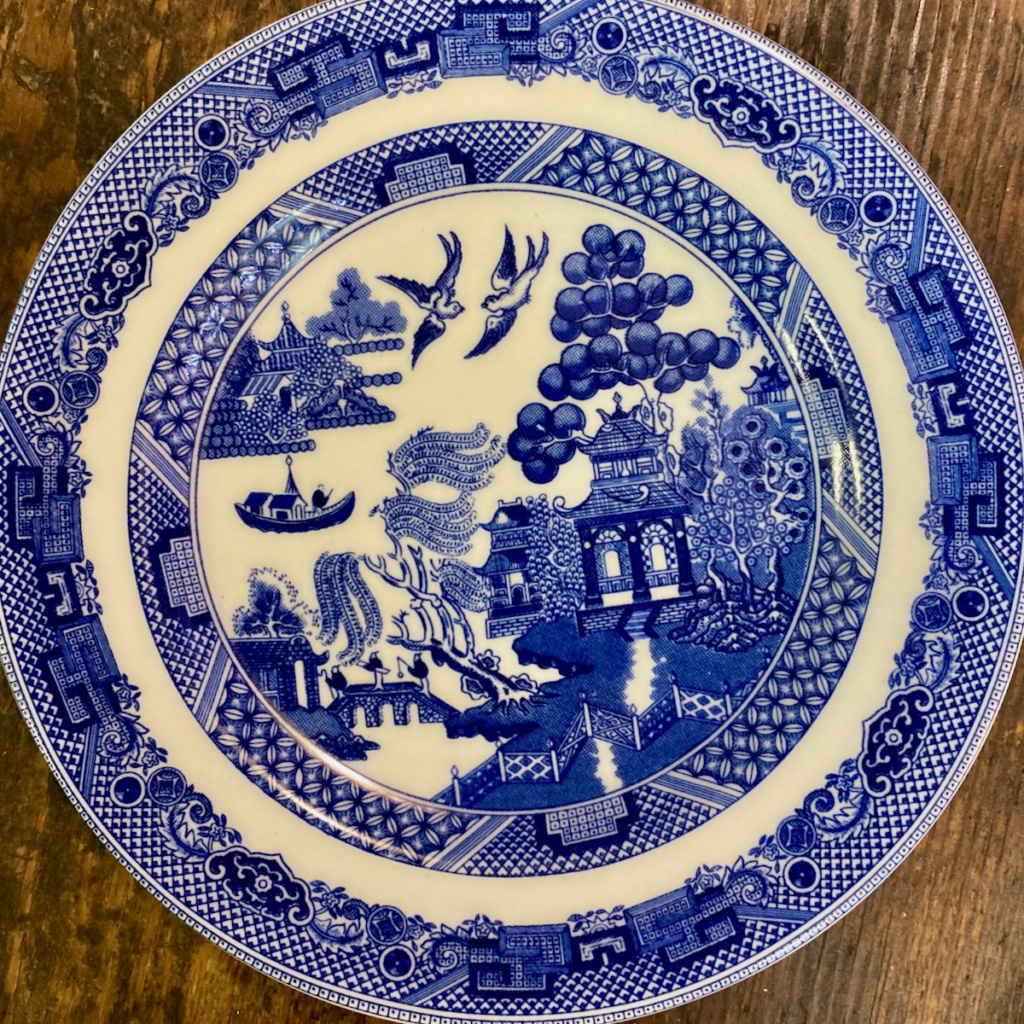
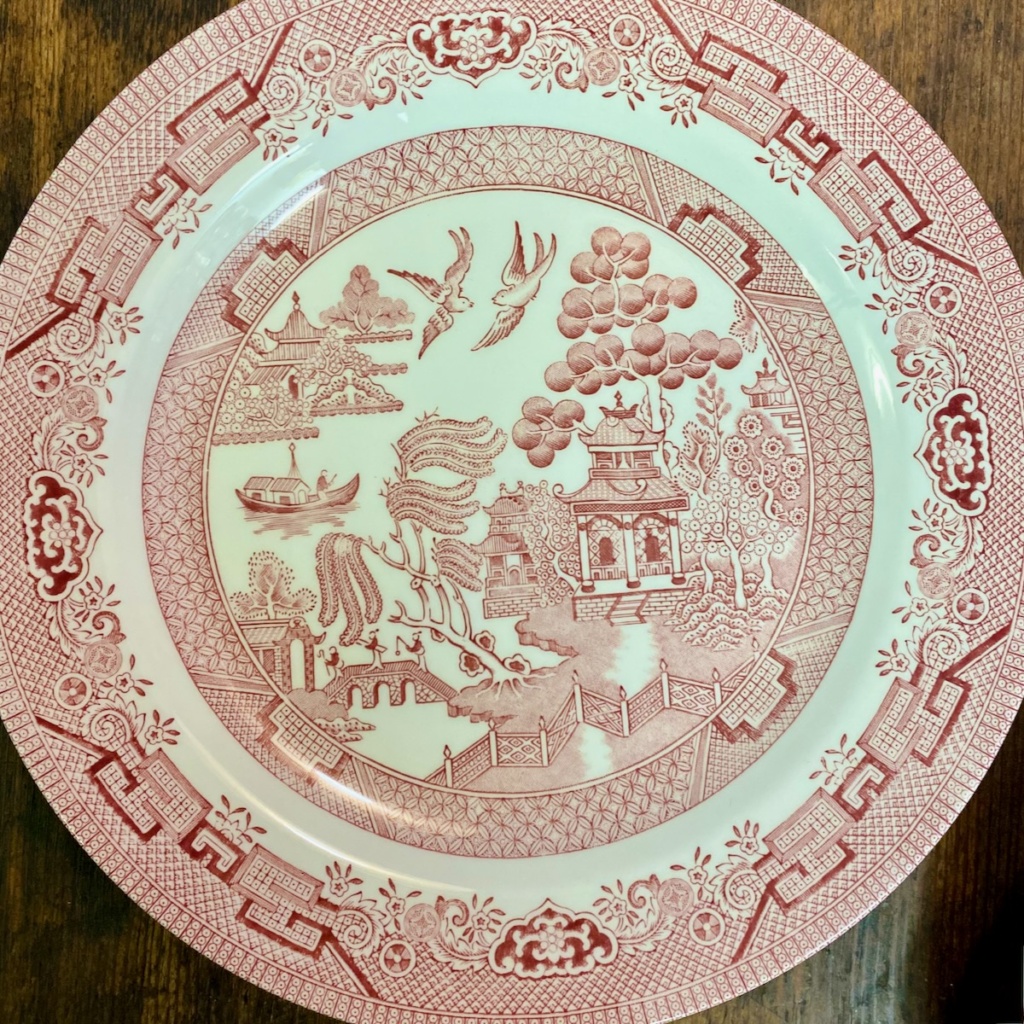
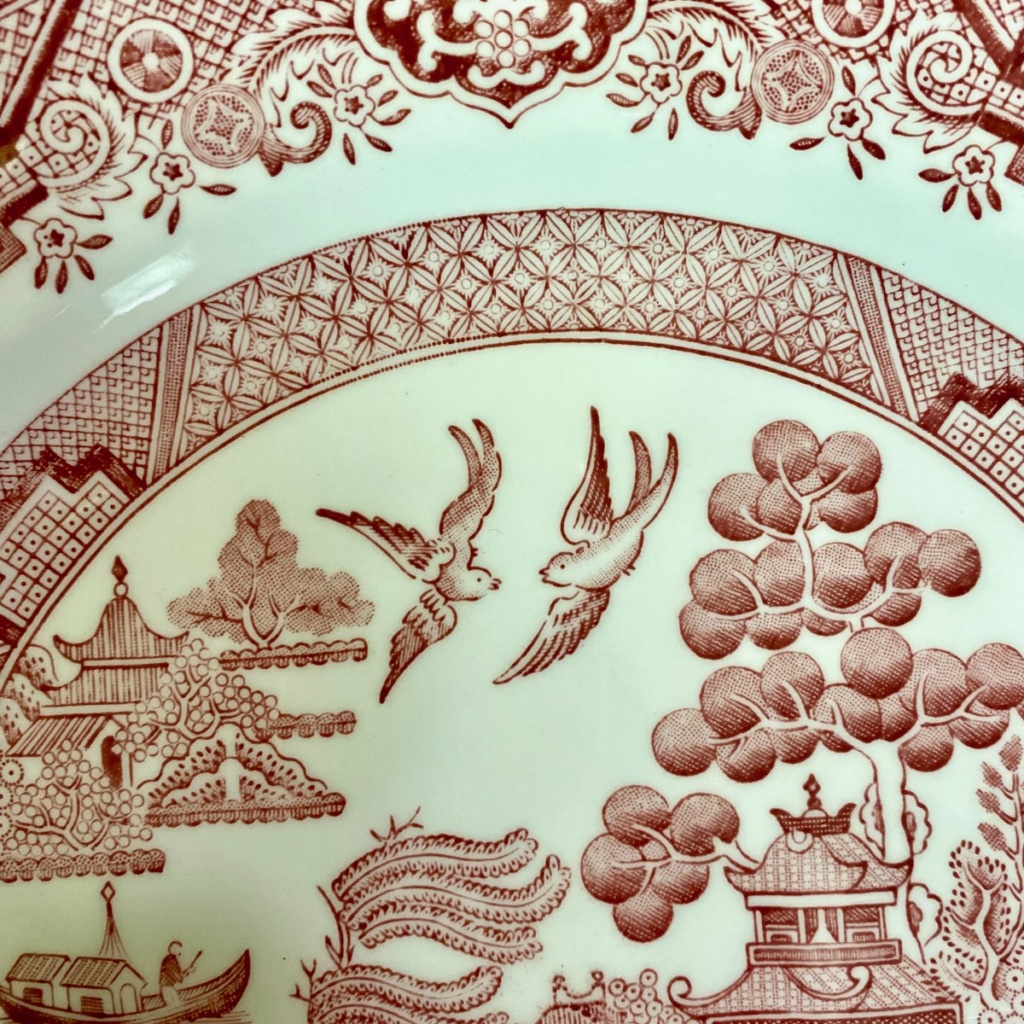
Hope you have enjoyed today’s birds on plates blog. We are pretty sure there are more in our collection and, if so, a sequel will follow!
